THE 2029 FROSH SURVEY

See CLASS OF 2029 page 6


See CLASS OF 2029 page 6
By Sena Chang Senior News Writer
Student-facing budget cuts have primarily impacted non-essential items like free food, merchandise, and department events with the goal of preserving the University’s most important priorities, three of Princeton’s top administrators said at an Undergraduate Student Government (USG) meeting on Sunday. Most of the cuts are between five and seven percent.
“We’re trying to do cuts that actually allow us to do bigger things … so that we’re not chipping away slowly at everything,” said
Vice President for Campus Life Rochelle Calhoun.
The casualties of the University’s budget reductions — aimed between five and 10 percent for all academic departments and units — include weekend hours at smaller library locations and Wintersession, a two-week winter break program offering workshops, classes, and trips.
While Nassau Hall has provided some guidance, departments have largely been left to make their own decisions, administrators repeatedly emphasized at the meeting. However, that decentralized approach has also made
” THERE IS AN INVISIBLE FENCE ALONG THE MIDDLE OF NASSAU
it difficult to assess the fullest scope of the reductions, they said.
“We’re not looking at every single line of people’s budget restrictions. We’ve got plans that sort of gave us, you know, concepts and proof of concepts in terms of what the bottom line would look like, but not a listing out of every single action that may change,” Executive Vice President Katie CallowWright said. “To try to do a full accounting of everything we’re changing is really unrealistic, or really quite difficult.”
“We’ve reviewed 100 plans from individual ac -
By Leslie Spencer & Angela Smith Guest Contributors
In a recent Opinion piece, Siyeon Lee and Charlie Yale critiqued a letter from Princetonians for Free Speech (PFS) to entering first-year students that appeared recently in The Princeton Tory, the University’s leading conservative political magazine. In their piece, Lee and Yale questioned why we chose to publish in “a journal that only appeals to a select few on this campus,” and accused us of holding “selective views of free speech.”
To be clear: there is no such
thing as free speech for some but not for others. Other than speech that is unprotected by First Amendment law, PFS is committed to defending the widest possible freedom of speech and open discourse for everyone, no matter how unpopular or offensive the point of view.
The Tory gave PFS the opportunity to address issues of free speech, academic freedom, and Princeton’s campus culture. This spring, Antonio Settembrino ’28 recounted in a Tory colSee SPEECH page 10
Please send any corrections requests to corrections@dailyprincetonian.com.
In 1993, Princeton area town businesses set out to win over the college students market by making themselves more affordable and accessible. Thirty years later, Nassau Street has a very different look. With new shops and changing student habits, how does the renowned main street today compare to the one their predecessors knew of years past?
By Luke Grippo & Clara Docherty Assistant News Editor & Staff News Writer
New Jersey gubernatorial candidates Mikie Sherrill and Jack Ciattarelli presented sharply differing views on education and Princeton’s relationship to the state at their first debate held on Sunday in Lawrenceville.
The University has enjoyed a particularly close relationship with outgoing Gov. Phil Murphy through the New Jersey AI Hub, a partnership funded with $25 million in state money along with contributions from Microsoft and Coreweave.
Ciattarelli, the Republican nominee, criticized the partnership.
“I thought [the funding] should have gone to our public universities like NJIT or Rutgers,” Ciattarelli said. “My first job is to take care of our public university colleges and our public college university students.”
On the other hand, Sherrill, a Democrat currently serving in Congress, strongly supported the University’s relationship with the state, stating that she wants to “ensure that we’re continuing to push money into our ally University, including where we are improving innovation, driving up our research,” and even “taking the federal government into court” to win back research funding suspended by the Trump administration.
Throughout the night, the candidates addressed numerous issues implicating college students, ranging from escalating housing rents and income tax to mental health and public transit.
Early in the debate, Ciattarelli proposed eliminating the first two years of income tax for recent college and high school graduates. He addressed the high housing rent and N.J.’s status as a state with one of the highest property taxes.
Ciattarelli also presented a number of proposals to help alleviate housing concerns, including numerous senior tax exemptions, capping property taxes for first-home buyers, and the two-year income-tax exemption for citizens right out of school.
Sherrill addressed these concerns by advocating for equitable cost distributions for services and school administrations across municipalities, as well as supporting senior citizens through the Affordable New Jersey Communities for Homeowners and Renters (ANCHOR) program.
The candidates also discussed mental health and privacy in public K–12 schools.
The congresswoman advocated for an increase in mental health counselors and described AI as bringing “a whole extra set of issues” regarding mental health.
Ciattarelli responded by emphasizing that school districts “should not be keeping secrets from parents.”
The candidates also addressed the U.S. Department of Education and the state of public education, with Ciattarelli advocating for an overhaul of the entire public school system: “back to basics: teaching critical life skills, providing vocational training opportunities, and a more rigorous academic curriculum,” he said.
Sherrill, on the other hand, encouraged merging some school districts in order to
help eliminate unnecessary administrative costs.
“[New Jersey] has more municipalities than California, more school districts than municipalities, and it’s raising costs on everybody,” she said.
Addressing the Trump administration’s dismantling of the Department of Education, Sherrill added that she would have her attorney general sue the federal government to “claw back as much money from the federal government as we can” — an act that Ciattarelli called “a waste of taxpayer dollars.”
The candidates also engaged in conversations about improving New Jersey Transit, support for a proposed state sanctuary law, and responses to political violence in the wake of Charlie Kirk’s death.
While Sherrill called for improving general maintenance of the rail lines, Ciattarelli proposed bringing all of the state’s mass transportation systems under a single authority: the Garden State Transportation Authority. This single entity would have “better management” and “better accountability,” drawing their revenue from the state budget, he said.
Ciattarelli took a definitive stance against the Immigrant Trust Directive, which limits the types of voluntary assistance that state law enforcement officers may provide to federal immigration authorities, and opposed the designation of New Jersey cities as sanctuary cities, which he believes “only encourages immigration and restricts our local law enforcement.”
The Princeton Town Council passed a resolution in support of the directive this
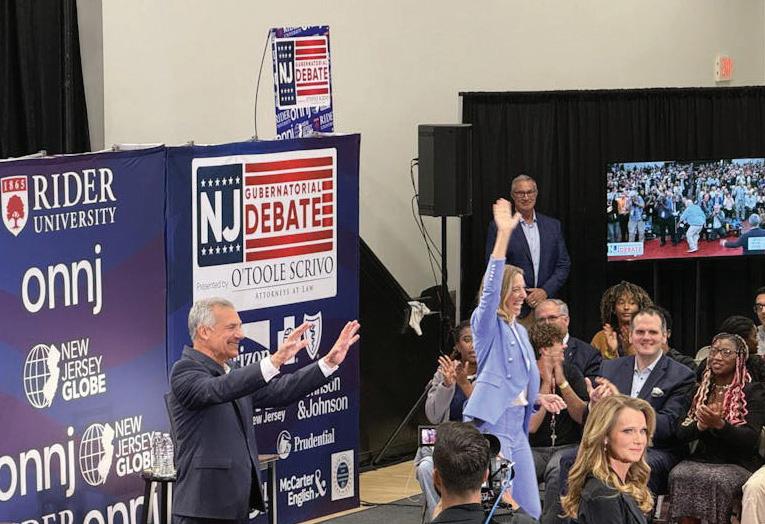
summer following a federal immigration raid that arrested 15 people.
Meanwhile, Sherrill emphasized the importance of due process rights and following the Constitution, citing her own experiences with undocumented individuals.
“I’ve prosecuted people who were criminals here and who are undocumented. They were deported because I care deeply about public safety for the people here,” the congresswoman said.
In a press gaggle following the debate, Sherrill declined to take a definitive stance on the Immigrant Trust Directive.
New Jersey and Virginia are the only two states to be holding gubernatorial elections this fall, marking the first elections to take place since President Trump
took office in January. The Lieutenant Governor debate will be held on Sept. 30 at Kean University, and the second gubernatorial debate will be held on Oct. 8 at the New Brunswick Performing Arts Center. The election will be held on Nov. 4.
Luke Grippo is an assistant News editor for the ‘Prince.’ He is from South Jersey and usually covers University and town politics, on a national, regional, and local scale. He can be reached at lg5452@princeton.edu.
Clara Docherty is a staff News writer for the ‘Prince.’ She is from Lafayette, N.J., and typically covers campus clubs and institutional legacy. She can be reached at clara.docherty@ princeton.edu.
By Sena Chang Senior News Writer
In the wake of Charlie Kirk’s assassination, the Heritage Foundation, one of America’s most prominent right-wing think tanks, abruptly canceled a lecture at Princeton scheduled for Sept. 16, citing security concerns. The event was originally scheduled to feature Wilson Beaver, the Heritage Foundation’s Senior Policy Advisor for Defense Budgeting and NATO Policy, but was pulled just days before it was set to take place.
“Heritage made this decision out of an abundance of caution as it reviews its personnel security policies following the recent assassination of Charlie Kirk,” the American Whig-Cliosophic Society (WhigClio) said in a statement online.
The cancellation at Princeton appears to be the first time that Heritage, one of the most prominent right-wing think tanks in America and the birthplace of Project 2025, has pulled a speaker from a college campus since Kirk’s death. Heritage did not respond to a request for comment in time for publication.
“We’re still committed to bringing speakers on various sides of the conservative spectrum,” President of the Cliosophic Society (Clio) William Neumann ’27 told The Daily Princetonian. “We’re not going to be afraid or intimidated.”
Campus leaders across the political spectrum joined in condemning the killing. “The assassination of Charlie Kirk is abhorrent — it’s political violence, it’s antithetical to everything Whig-Clio stands for, it’s antithetical to everything this country is about,” Samuel Kligman ’26, President of Whig-Clio, told the ‘Prince.’ Kligman, who identifies as liberal, added, “We need to look past our differences, or at least be able to grapple with our differences without being at each other’s throats.”
The Princeton Open Campus Coalition (POCC) also weighed in on Kirk’s assassina-
tion. “The best way to pay our respects to the late Charlie Kirk, and indeed the best way to honor the mission of the university and the principles of our nation, is to see the humanity in the person on the other side of the debate,” the POCC wrote in a statement sent to residential college listservs on Sept. 11.
Alongside denouncing the assassination itself, many community members voiced concerns about the implications of Kirk’s death to political dialogue and expression, particularly with regard to conservative thought on campus.
“The first reaction I had was shock,” Joshua Jen ’28, a member of Clio, told the ‘Prince.’
“After seeing the video, then getting more updates, I think I was honestly very sad; it was just very telling of our current political atmosphere.”
“Hopefully, it’s more of a short-term thing,” Jen said, addressing speaker cancellations. “But there is some consideration about security now, especially for people who are more conservative or a little bit more controversial.”
At a Sept. 16 panel titled “What the Assassination of Charlie Kirk means for America,” hosted by the James Madison Program, Professor Robert P. George underscored the importance of constructive dialogue.
“It’s critically important that there be role models, and especially on the left, but really on both sides,” George told the audience of more than 100 attendees.
George, who appeared on Kirk’s show in April 2025, added that it was important for conservatives to “stand up for Charlie Kirk’s way” of modeling civil discourse, persuasion, and argument.
Nationwide, political violence is on the rise, committed by people from a range of ideologies. On the day of Kirk’s shooting, Sept. 10, the Bridging Divides Initiative (BDI), a non-partisan research program at Princeton, released a discussion paper about combatting political violence with community safety and de-escalation ap-
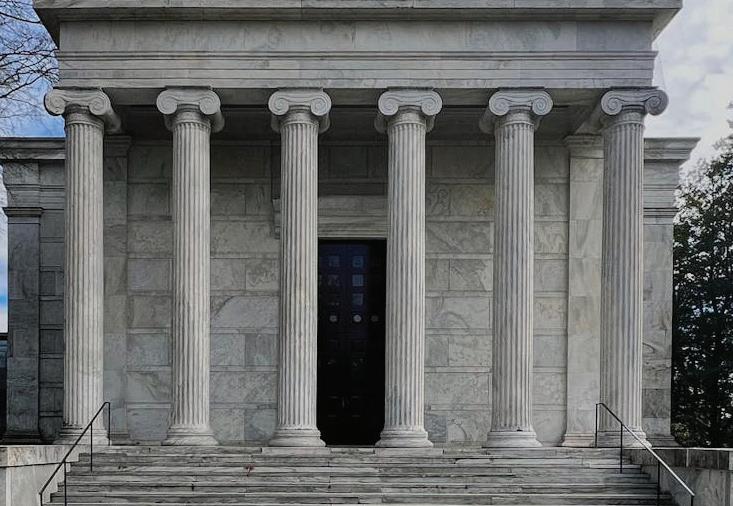
proaches. One key finding was that funding and policies that support community safety have not kept pace with growing demand nationwide.
“The advent of social media has made it easier for people to threaten or even advocate violence from a distance with fewer repercussions,” Shannon Hiller GS ’15, the executive director of BDI, told the ‘Prince.’ Hiller said that these factors — combined with the use of dehumanizing rhetoric by political leaders, persistent threats and harassment, limited mental health support, and the widespread availability of weapons — have created “a really risky environment” that has contributed to politically motivated violence in the past few
months.
The initiatives also virtually hosted “Community Safety and De-Escalation Approaches to Mitigating Political Violence” on Sept. 18, where leading practitioners discussed improving safety and security tools and training.
The University works with student organizations on a case-by-case basis to determine security needs and ensure proper support for “safe and successful events,” University spokesperson Jennifer Morrill said in a statement.
Neumann emphasized that Kirk’s killing happened on a college campus, “which is supposed to be a sanctuary of freedom of expression, of safety, and of respect.”
“I feel the repercussions would be pretty broad for conservative speaker events,” he added. Still, Kligman believes that the campus climate has mostly been hospitable to civic discourse.
“In general, people at Princeton — whether that be students, faculty members, or members of the town community — are all willing to be respectful and be civil,” he said. “I don’t know what’s going to happen on campus going forward, but I’m hopeful.”
trying to do cuts that
Continued from page 1
ademic and administrative meetings so that we can both give guidance to those units, and also look for trends,” said Provost Jen Rexford ’91.
Rexford acknowledged that layoffs will gradually occur and that graduate student admissions have been reduced, although the exact scope of the reductions was not immediately clear. She said that hiring for faculty and staff will continue, though at a reduced pace, and new buildings will still be constructed, but more gradually.
“We’re looking across a whole portfolio of ways that we spend money at the University for opportunities to be more efficient and to use the resources we have to support our financial priorities,” she added. According to Rexford, the University is exploring additional savings across units as well, including from off-campus real estate, IT services, and procurement.
The retreat for the University’s presidential cabinet, for one, was held oncampus this year as it was “substantially cheaper,” according to Rexford. Other changes could be less structural; the reduction of late meal hours, for example, may be temporary.
“Once [Dining Services] get a sense of how students are moving through the dining halls, they can make adjustments accordingly,” Calhoun said. “So you might, in fact, see some adjustments.”
Administrators also said that certain adjustments perceived as related to budget cuts could be driven by other factors.
Calhoun said the temporary reduction in overnight services at Frist Health Center was “a hiring issue,” as nurses were needed to staff the overnight infirmary. Calhoun did not specify whether reduced hours at Murray Dodge, where some student workers saw their hours significantly fall off or cut altogether, during the first two weeks of the school year were tied to budget cuts.
Eight years ago, Princeton released a campus plan for 2026. Here’s what’s been completed — and hasn’t
By Victoria Davies Head News Editor
Eight years ago, in a pre-COVID world, Princeton University published a framework outlining construction for the next era of its campus to be completed through 2026.
Other student-facing funding sources have not been cut. Funding for student groups remains “largely unchanged,” Associate Dean of Undergraduate Students Ian Deas said, in part because USG allocated a larger portion of its budget — about $160,000 this year up from $140,000 last year — to the Projects Board. The Projects Board funds most student club events on campus.
“Right now, most students are scared to ask for any sort of funding for their individual initiatives, which is why we voted to expand our Projects Board funding for the semester in anticipation of these budget cuts from other departments,” Deputy USG Projects Manager Marvel Roth ’28 said. Amid concerns about transparency around budget cuts, USG members are considering avenues to share information with students.
“We’re continuing to experiment with different media strategies and partnerships to strengthen our presence and reach more students and continue to work with administrators in shaping how they communicate information,”
USG President Enzo Kho ’26 wrote in a statement to the ‘Prince.’
“While I don’t think the University is being intentionally unclear, I do think they can do more to simplify and clarify what’s happening, especially when it affects everyday student life,” USG Vice President Aishwarya Swamidurai ’26 wrote to the ‘Prince.’
Swamidurai expects communication on budget cuts to be a collaborative effort between USG and the administration.
“We can help bridge gaps and amplify messages — but we don’t always have the full picture, nor are we the source of the decisions being made,” she wrote.
Sena Chang is a senior News writer for the ‘Prince.’ She typically covers campus and community activism, the state of higher education, and alumni news.
Since then, scaffolding, renovations, and new buildings have overwhelmed campus. In 2025 alone, Frist Health Center, Briger Hall, and the new wing of Dillon Gym have finished construction and opened their doors to students, faculty, and staff.
Many of the plan’s visions have now been realized, from new graduate student housing near Lake Carnegie to the two new residential colleges south of Poe Field.
Still, there are some notable omissions in the plan, which University President Christopher Eisgruber ’83 in 2017 referred to as a “flexible, revisable framework.” The plan does not include the new art museum, whose construction was announced in 2018, a year after the campus plan was released. Nor does it detail the upcoming and extensive renovations to Guyot Hall, which will reopen as Eric and Wendy Schmidt Hall in 2029.
The plan did propose two new residential colleges adjacent to Poe Field to help the University towards its goal of expanding the undergraduate student body by 500 students across four years, and amid the closure of First College in 2022.
With the Class of 2029 arriving on campus earlier this year, the expansion is complete, as Yeh College and New College West (NCW) have been open for three full years.
The plan also outlined a vision for a new space for engineering.
This semester, the new Environmental Studies and School of Engineering and Applied Sciences (SEAS) complex has opened for classes, and the library is set to open in Commons Hall later this fall.
Moving south across Lake Carnegie, the proposed “lake campus” from the 2026 Campus Plan opened last academic year for residents. Meadows Apartments consist of 379 housing units designated for graduate students and postdoctoral researchers. Meadows Neighborhood also includes a cafe and is home to several new athletics facilities.
Haaga House, the Cynthia Paul Softball Stadium, and a new Racquet and Recreational Center — homes to varsity women’s rugby and men’s rugby club, varsity women’s softball, and varsity squash and tennis teams, respectively — all opened alongside Meadows Apartments last year.
The softball, tennis, and squash teams were all initially proposed to move from their previous spaces; the rugby teams were already located in the Meadows area, with Haaga House providing newer facilities and covered spectating areas.
The 2026 Campus Plan also proposed that, “over time,” a new hockey arena with two layers of ice may be opened in the neighborhood to replace Baker Rink in central campus. The construction of a new arena has not yet been announced.
To wrap up the Meadows Neighborhood, the campus plan proposed a pedestrian bridge across Lake Carnegie. The bridge was suggested to leave the main campus from near Jadwin Gym and connect to Meadows Apartments. A plan for its construction has not been announced, although
graduate students have previously reported concerns with Washington Road Bridge when it was partially closed for construction last year.
The final significant studentfacing aspect of the campus plan is the expansion of Dillon Gym. The expansion has taken place across three stages, with the final stage opening earlier this semester.
The first phase of the Class of 1986 Fitness and Wellness Center opened in January 2024, followed by the second phase — including a new entrance and a two-story pavilion — around eight months later. On Sept. 3, CampusRec hosted its annual CampusRecExpo on the new outdoor court, celebrating the completion of the building.
Amid the new and renovated buildings across campus, much of the 2026 plan focuses on transitions between the buildings. It describes an east-west campus connector, with plans to stretch from the Graduate College along to the far east of Briger Hall. The connector is now complete upon the opening of Ivy Lane earlier this semester.
The north-south connector was planned to reach as far north as the Engineering Quadrangle and as far south as Meadows Campus, including the aforementioned bridge over Lake Carnegie that has not been built.
The plan also focuses on sustainability, working towards efforts of net-zero emissions on campus by 2046. It does not mention the new TIGER and CUB energy facilities, which have both opened in the past few years.
Victoria Davies is a head News editor for the ‘Prince.’ She is from Plymouth, England and typically covers University operations.


By Andrew Bosworth Research Editor
A landmark NASA mission led by Princeton researchers will launch a rocket on Wednesday from the Kennedy Space Center in Cape Canaveral, Fla., sending a probe towards the sun to study the heliosphere, a plasma bubble surrounding the solar system.
The Interstellar Mapping and Acceleration Probe (IMAP) mission aims to study the energization of charged particles and the interaction of the solar wind. The 10-byfour-foot probe is set to launch on board a SpaceX Falcon 9, an orbital-class reusable rocket, whose first-stage booster returns to the landing zone following launches. The launch was originally scheduled to take place Tuesday but was pushed “to allow more time for the recovery assets to arrive at the landing zone.”
Professor of Astrophysical Sciences
David McComas serves as the principal investigator for the IMAP mission, which includes 10 instruments and 13 sensors, in a project that comprises 82 U.S. partner institutions in 35 states and the space agencies of several European and Asian countries.
McComas joined Princeton in 2016 as the Vice President for the Princeton Plasma Physics Laboratory, a Universitymanaged Department of Energy (DOE) na-
tional laboratory. Before then, McComas had worked for two decades at the DOE.
While NASA selected IMAP in 2018, McComas sees his work on this project as having begun a decade-and-a-half prior, when he was the principal investigator for the Interstellar Boundary Explorer, another NASA mission which launched in 2008 to study the boundary region of the solar system.
For IMAP, McComas visited the Applied Physics Laboratory at Johns Hopkins almost every week for the past several years to supervise the construction of the spacecraft.
One of the 10 instruments on board IMAP, Solar Wind and Pickup Ion (SWAPI), was built in the Space Physics Laboratory at Princeton, located at 171 Broadmead, the former site of University League Nursery School.
“We built a NASA lab there with cleaning rooms and vacuum chambers,” McComas said in an interview with The Daily Princetonian. “[In addition to SWAPI], we also tested two other instruments in there and calibrated one of them completely. And then for a third instrument, we brought it in and we cross calibrated it with the instrument that we built.”
Jamie Rankin, an astrophysics lecturer and scholar, is the instrument lead on the Princeton-built SWAPI. McComas originally served both as the principal
investigator for IMAP and as the lead on SWAPI, but quickly opted to place Rankin in charge.
“We’re putting together a beautiful, big picture of our heliosphere,” Rankin told the ‘Prince.’
Over the next three months, the probe will fly towards the sun, eventually settling at a point about a million miles away from Earth, where gravity from the sun is balanced. The mission will transition to a new phase in February 2026 focused on science and data gathering.
“You’re taking science data, you’re analyzing it, you’re writing papers,” McComas said. “I’ve got a co-I (co-investigator) team of 25 institutions from 13 states and six countries, all of whom are involved in the science delivery, analyzing the data, figuring out what it means, writing scientific papers, presenting it to the public, making the new discoveries.”
“I’m making it not be about my institution or anybody else’s institution,” McComas added. “I’d like us to treat it like one team.”
“From the very, very beginning of this mission, there were scientific goals that people came up with that were the prime mission goals,” Rankin said. “So there’s two years to pursue those goals and get that science out, and that’s the guaranteed funding … We would love for it to be 11

years for the whole phase of a solar cycle, for example, but we don’t know.”
The development, launch, and operation for the two-year science mission will cost $781.8 million, according to a NASA spokesperson.
McComas moved to Florida on Sept. 1 with his wife to oversee all aspects of IMAP and ensure its compatibility with the two other spacecraft also on board the Falcon 9 rocket. While IMAP is the primary spacecraft, the other two are participating in SpaceX’s rideshare program. These two spacecraft are NASA’s Carruthers Geocoro-
na Observatory and the National Oceanic and Atmospheric Administration’s Space Weather Follow On-Lagrange 1. “There are just a myriad of problems that pop up, things that are slightly different than the engineers expected,” McComas said.
On Sept. 24, IMAP plans to host a launch party in Peyton Hall to view the NASA livestream of the Florida launch, scheduled for 7:30 a.m. Eastern.
By Sena Chang Senior News Writer
TigerTransit, the University’s bus system, has introduced updated hours and routes this academic year after reviewing ridership data and gathering feedback from student and department representatives.
Route changes include new connections to the Meadows Drive and Stadium Drive garages, a new Route 5 linking Princeton Station to Stadium Drive Garage, and a restructured campus circulator (Routes 6A/6B) that runs evenings and weekends.
Other routes saw adjustments to operating hours. Evening service has been expanded between 7 p.m. and midnight, when ridership is high. All routes now end at midnight, including two evening routes that ran from 10 p.m. to 3 a.m. “TigerTransit ridership and system performance are reviewed continuously, year-round, and revised as needed at the conclusion and start of each academic year,” Jennifer Morrill, a Univer-
sity spokesperson, wrote in a statement to The Daily Princetonian. According to Morrill, September ridership has increased six percent compared to the same period last year.
Some graduate students — among the most frequent TigerTransit users — have generally welcomed the changes, noting increased accessibility and relatively similar service compared to previous semesters.
“One thing that I’m really impressed with regards to TPS (Transportation & Parking Services) is that they are extremely data-driven,” Christopher Catalano GS, the Facilities & Transportation Chair of the Graduate Student Government, told the ‘Prince.’ “They’re using the data explicitly to craft the schedule and the bus route and everything else they do.”
Catalano meets monthly with TPS staff and said that he consistently stressed to TPS the importance of graduate students’ access to residences such as Lakeside, Lawrence, Meadows, and the Graduate College last semester. The
new campus circulator now serves all of these locations.
Naman Agrawal GS, who takes the bus daily to reach classes and his office, said that he does not “see any reasons to complain about the service,” though he noted that the lack of service after midnight can be inconvenient.
“It was a nice security to have that previously, if I had to work until really late, I could take [the bus],” Agrawal told the ‘Prince.’ He added that limited late-night service could pose challenges for students who frequent the Debasement Bar (DBar), a private club located beneath the Graduate College.
“A lot of people do tend to leave after 12 a.m., and it would be very difficult now to get home from the DBar — you probably have to book an Uber yourself, because there’s no longer buses after 12,” Agrawal said.
Other students also criticized the limited frequency of the buses, especially the campus circulator, which students report runs every 45 minutes.
“It is nice having the buses run ev-
ery 15 minutes during the day, but it is a little inconvenient for me that they stop at 6:45 p.m., and only the campus circulators going after that,” Alexandra Bodrova GS wrote to the ‘Prince.’ Bodrova said that the new schedule often forces her to leave campus earlier than desired or remain in her office late if a bus is missed.
“Sometimes I would walk instead, but since the campus is not well lit, and I am a woman, I do not feel perfectly comfortable walking alone after dark,” Bodrova wrote.
Morrill said that changes to bus hours were made after monitoring ridership during evening hours. “Over recent years, various late-night transit options have been offered as late as 3 a.m., but ridership after midnight remained very low in each iteration, averaging fewer than five riders per hour even when classes are in session,” she wrote.
Rayan Elahmadi ’26, a member of the men’s water polo team, also called for more frequent services and additional routes.
“I’d like to see increased services from Stadium Drive Garage between 6:30 p.m. and 7:15 p.m., Elahmadi told the ‘Prince.’ He noted that “more routes toward the E-Quad and Prospect Avenue would benefit the student athlete population.” Catalano said there are ongoing discussions about potentially reevaluating bus routes and hours for the spring semester — a change from the usual yearby-year review process.
“Because of all the changes that are happening, not just to the budget and the routes — but also to campus itself, with all the new engineering buildings opening up, the traffic around campus is changing,” he said. “We’re trying to be proactive and respond quickly to the changing environment.”
Sena Chang is a senior News writer for the ‘Prince.’ She typically covers campus and community activism, the state of higher education, and alumni news.
By Luke Grippo & Raphaela Gold Assistant News Editor & Head Features Editor
The Sustainable Composting Research at Princeton (S.C.R.A.P.) Lab is pausing some composting operations for the 2025–26 academic year because of staffing shortages due to the Universitywide hiring freeze.
In previous years, the facility has composted coffee grounds from campus cafes and food scraps and compostable dinnerware from the Frist Food Gallery and small department events. This year, the Lab will no longer accept waste from Frist or events. Instead, food waste will be sent to Trenton Renewables, which already recycles leftovers from all of Princeton’s other dining halls to produce biogas and compost.
An announcement published in early September said that the reduction in operations is due to the hiring freeze, as the Lab has not been able to hire the necessary staff.
In a statement to The Daily Princetonian, University spokesperson Jennifer Morrill confirmed that these changes were because of University budgeting concerns.
“These changes come as part of the broader effort by University units to adjust spending to address financial conditions,” the statement read.
The S.C.R.A.P. Lab, affectionately known by its workers as “Scrappy,” was launched in 2018 through a grant secured by the Office of Sustainability to convert a portion of campus food waste into nutrient-rich soil for the campus grounds team using a small-scale composting technology. In total, the S.C.R.A.P. Lab has diverted and recycled over 355,000
The facility will still compost coffee grounds from campus cafes, including Coffee Club, and food scraps from a handful of Office of Sustainability events.
pounds of food waste into compost. And this is not the first time S.C.R.A.P. Lab operations have been paused: It was on hiatus from 2020 to 2022, during the COVID-19 pandemic.
The facility was also a site of student and faculty engagement as part of the Campus as Lab (CAL) initiative. Some students incorporated the CAL into their independent work at Princeton: one freshman seminar in Fall 2024 was centered around the CAL. Until recently, the CAL Program employed dozens of students who gained hands-on composting experience as operational assistants and bin monitors.
Now, the hiring freeze has put a wrench in the S.C.R.A.P. Lab’s operations.
The S.C.R.A.P. Lab will still process coffee grounds because it “can be accomplished with less personnel than composting food scraps,” according to a University statement, and some students are still employed by the Office of Sustainability to transport coffee grounds to the
S.C.R.A.P. Lab. However, not all students were able to keep their jobs.
Elise Taylor ’27, a former operational assistant, told the ‘Prince’ that she had worked at the S.C.R.A.P. Lab sorting trash and dumping it into the composting machine. This hands-on experience of working for the lab was often academically and personally enriching for the student workers: Emery Jones-Flores ’26 shared that she got involved with the lab both because she wanted a job as a “lower income student” and because she wanted to continue her high school passion in environmental sciences.
Taylor added that the S.C.R.A.P. Lab’s efforts “had such a great impact on students learning from it,” ranging from freshman seminars to increased researcher support. “It became a much more productive and efficient way of composting because people were able to adapt to it as it’s getting researched,” she said.
With the indefinite pause, many of the students expressed their desire to continue their work with the S.C.R.A.P. Lab.
“I felt I was doing good. I really enjoyed my time there, and I would have liked to continue,” Isabella Sibaja ’26 told the ‘Prince.’
“I definitely was 100 percent interested in starting again this semester,” Jones-Flores said.
The University shared that for the operations to continue as planned, they would need to hire two part-time Facilities Operations Sanitation staff members who would be supported by one student employee per weekday shift.
Luke Grippo is an assistant News editor for the ‘Prince.’ He is from South Jersey and usually covers University and town politics, on a national, regional, and local scale.
Raphaela Gold is a head Features editor for the ‘Prince.’
By Nicolas Rohou Staff Humor Writer
Out with the old, in with the new. Octobersession has been announced for fall break of 2025 in lieu of Wintersesssion.
The week-long program will be open to Princeton community members and feature a variety of classes, activities, and trips for sleep-deprived, midterm-surviving students to enjoy.
“I’m excited to take Intro to the Dewey Decimal System,” noted Libby Rarian ’29. “I’ve heard it’s supposed to get really exciting once we get to 749-Furniture and Accessories.” Other notable courses students on campus have been raving about include “Cursive: What’s It Good For?”, “Balancing a Checkbook,” and “A Complete History of Sundials.”
In addition to classes presented by faculty, students, and community members, the program will feature an exclusive course hosted by special guest Mary-Louise Pennywell, the writer’s grandmother, who will instruct on apple pie baking techniques.
Also, for $40, Octobersession attendees can take advantage of several excursions through the Field Trips+ package. The package will include a trip to The Bent Spoon (ice cream not included), Harrison Street Park, and a specialized tour of Princeton Public Library.
The Daily PrintsAnything reached out to students to gauge excitement about the program.
“The Duck Duck Goose tourney they hosting [sic] gonna be so Ferda,” noted Buddy Lyght ’27. “The boys and I getting [sic] sendy all week and fading class, lowkey.” Further questions about why he would skip an optional class he had explicitly signed up for based on his interests appeared to deeply confuse and upset him.
International student Pharah Framhomme ’28 had this to say: “I’m honestly
not even interested in Octobersession. Plane tickets home are like $2,000 though, and they won’t let me stay on campus unless I enroll in something, so I guess I’m learning about pickleball tactics for beginners.”
‘Prints’ reporters also sat down with Bjor O. Cratt, the Deputy Vice Chair of the Board of Executive Directors of the New Office of Campus Engagement, for more on logistics.
“We will, unfortunately, be unable to provide free dining services to those attending the program, but we will offer
lunch and dinner options in Whitman dining hall for about $12 per meal,” said Cratt. “However, thanks to additional private funding we’ve recently received, we’re excited to be able to guarantee plumbing and electricity for up to 94 percent of those on campus during the week.”
of the Snort: How to Get People to Laugh at Your Shitty Comedy,” he can be reached at nr9348@ princeton.edu.

By Nate Voss Contributing Humor Writer
The following content is purely satirical and entirely fictional.
THE HAGUE, NETHERLANDS — During their long-awaited trial for crimes against humanity in August, lawyers for Vinkelson, Ingram, Leonard, and Evans (VILE) Architects have fought tooth and nail, claiming everything from ignorance to insanity drove their firm’s involvement in designing Fine Hall. However, by the closing arguments yesterday, they seemed to be backed against a wall, snared in the reams of evidence brought against them.
That’s when Alan Dershowitz, VILE’s hired-gun head attorney, dropped a bomb — secret internal documents and recordings revealing that Princeton University itself requested many of Fine’s most shameful features.
“We request that the new center for Mathematics be really, really ugly,” one document read. “On the ground floor, large concrete pillars should be placed in illogical and inconvenient places, and one of the classrooms labeled ‘Fine Hall’ should be way in the corner of a completely different building.”
While initial requests did come from Princeton, audio tapes showed that VILE was still responsible for many specific design choices. Par-
ticularly damning were recordings following VILE’s receipt of a memo from Princeton, which read, “In response to the math department’s lagging progress towards University fitness goals, we request that navigating Fine Hall require climbing many flights of stairs.”
On Sept. 17th, 1967:
Male Voice 1: “Make the elevators NARROWER, Joe!!”
Male Voice 2: “But, sir, they already only fit four people.”
Male Voice 1: (with exaggerated sweetness) “Did I stutter, Joe?”
Male Voice 2: “N… n… no sir”
Male Voice 1: “Then NARROWER, DAMMIT!”
On Sept. 20th, 1967:
Male Voice 1: “Ha ha ha, you should, and switch the stairwell to the other side of the building again.”
Female Voice 1: “Ha ha ha ha ha, I can imagine those little BSE nerds, running between their classes like
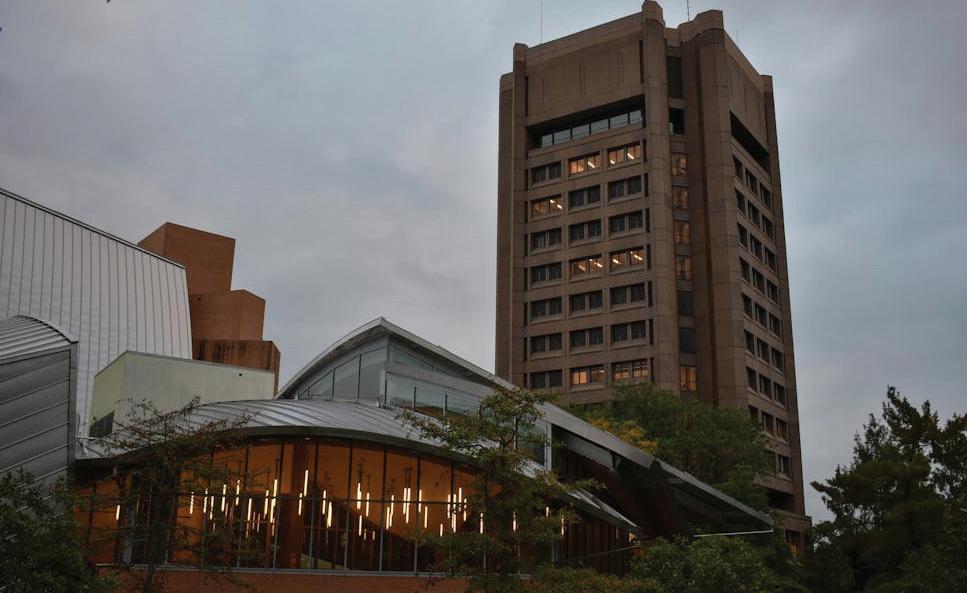
hamsters in a ball. Do you think we should make the AC work?”
Male Voice 1: “No way, are you crazy? Actually, I’ll get Joe to make the ventilation actively bad. Where is Joe, by the way? Probably crying or drinking alone, ha ha. JOE!?!?!?!!”
Following the release of the recordings, Princeton and the architecture firm appeared to pin the blame on Joe, captured on Princeton’s recordings as the sole employee on the 13-story building project.
“These ‘orders’ that Alan Dershowitz and his team found did not come from Princeton. If we were to speculate, they may have originated a certain architect named ‘Joe’ within VILE itself,” the University said in a statement.
Joe was last seen locked in a small room in VILE’s Trenton headquarters, designing an eight-story deep underground bathroom complex for Rockefeller College’s upcoming renovations. The International Criminal Court has placed a request for a wellness check.
When asked why Fine Hall’s case was re-opened after more than 50 years, ICC prosecutors replied “we had nothing better to do.”
Nate Voss ’29 is a contributing Humor writer. He has been waiting for an open elevator since Sept. 17th. He can be reached at nv5141@princeton.edu
Dear reader,
Welcome to The Daily Princetonian’s sixth-annual Frosh Survey. Our team has spent months diligently analyzing responses from over 800 first-years, seeking to tell the story of the Great Class of 2029.
Our survey was conducted over a period of 12 days, from July 28 to August 8, 2025. On four occasions, the ‘Prince’ sent emails containing a link to the survey to members of the Class of 2029 included in the Residential College Student Facebook as of July 28 — a total of 1,408 people. We received 877 responses, comprising just over 62 percent of the class — the highest participation rate yet.
Every question on the survey was optional. On select sensitive questions, respondents could explicitly decline to answer. All responses were fully anonymous and multiple submissions were disabled. To protect respondents’ anonymity and data, only select members of our survey team received access to the raw data, and none made any effort to identify individual respondents. As part of our commitment to comprehensive privacy, we collected and aggregated all raw data on Google accounts unaffiliated with the University.
Upon receiving hundreds of submissions, we embarked on a months-long process of compiling and checking each tabulation. A minimum of two ‘Prince’ editors from the Data team verified every datapoint.
We exercised discretion when presenting the data in question. Our team carefully considered the implications of various crosstabulations and sought to ensure that the responses of individual students could not be identified. When utilizing percentages, rather than using raw numbers to represent data, our team rounded the value to the nearest tenth of a percent. As every query was optional, many questions garnered sample sizes one to two percent smaller than the overall respondent pool; in our narratives, “respondent” refers to any student who responded to a given question.
Special thanks to Sam Kagan ’24, who developed the original Frosh Survey and without whom this project would not have been possible. Special thanks also to 2022 Senior Survey Director Caroline di Vittorio ’22 for her work developing programs to generate charts and web generation.
Despite our best efforts, our survey includes limitations. We did not complete statistical analysis of data points cross-tabulated from two or more questions, nor did we make any attempt to increase or decrease the weight of various demographic groups to more accurately match the overall picture of a larger group. At the same time, a check of our respondent pool’s composition against data previously released by the University regarding the demographics of the Class of 2028 indicates a fairly representative and large sample.
In sincerity, all that we report is a little out of date; between the survey and now, some respondents have likely had their first drink, experienced changes in their financial situation, and changed their major — then switched it back, then changed it again. We’re pretty sure at least some of the 71 percent of respondents who were virgins at the time of filling out the survey … aren’t anymore. Our survey constitutes a glance at the Class of 2028 as it existed in July, unresponsive to other life interruptions which may have taken place since.
Thank you for taking the time to read, consider, and interrogate our work. The Frosh Survey is meant to serve as a collaborative reflection, initiating dialogue for the greater Princeton community while preserving the stories of this consummately unique class. We also hope that it is, and continues to be, a whole lot of fun.
Regards,
Alexa Wingate and Vincent Etherton Head Data Editors
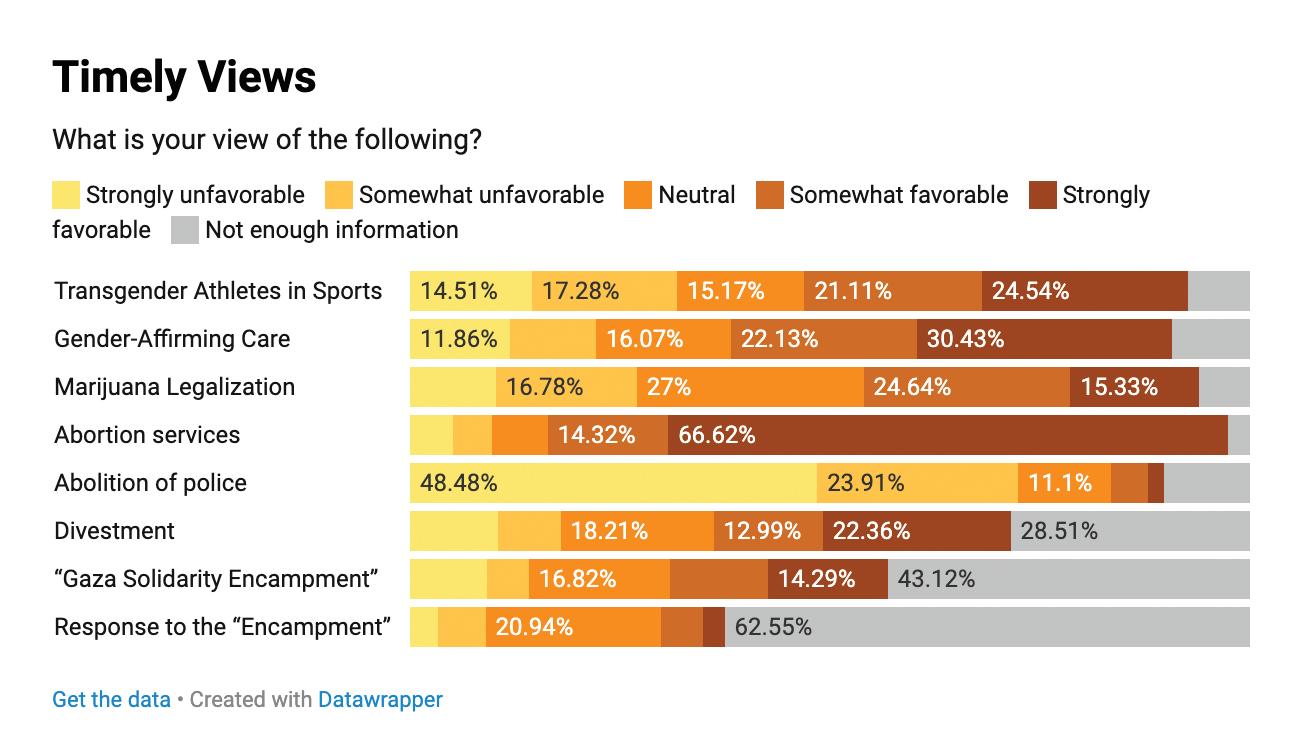


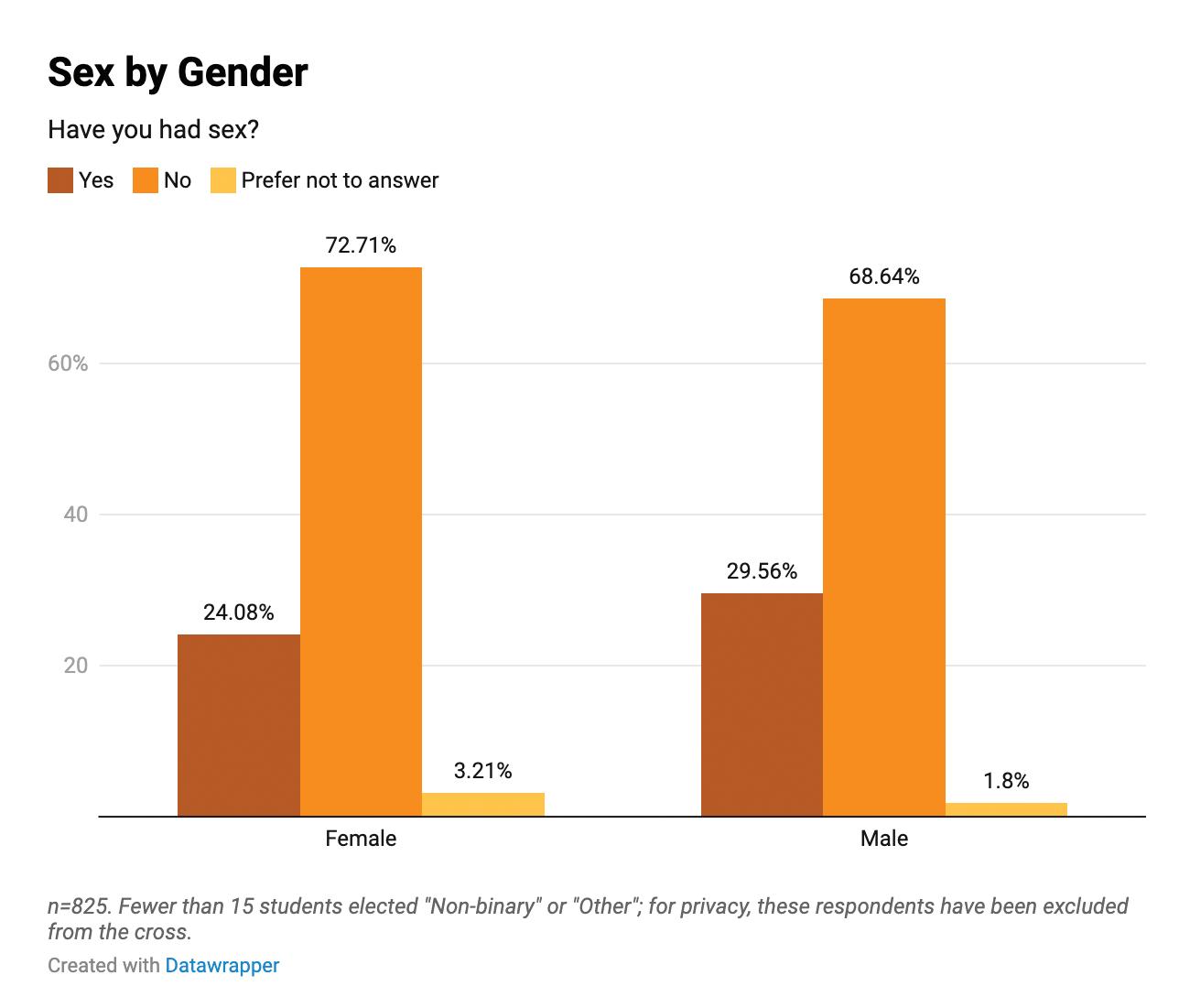
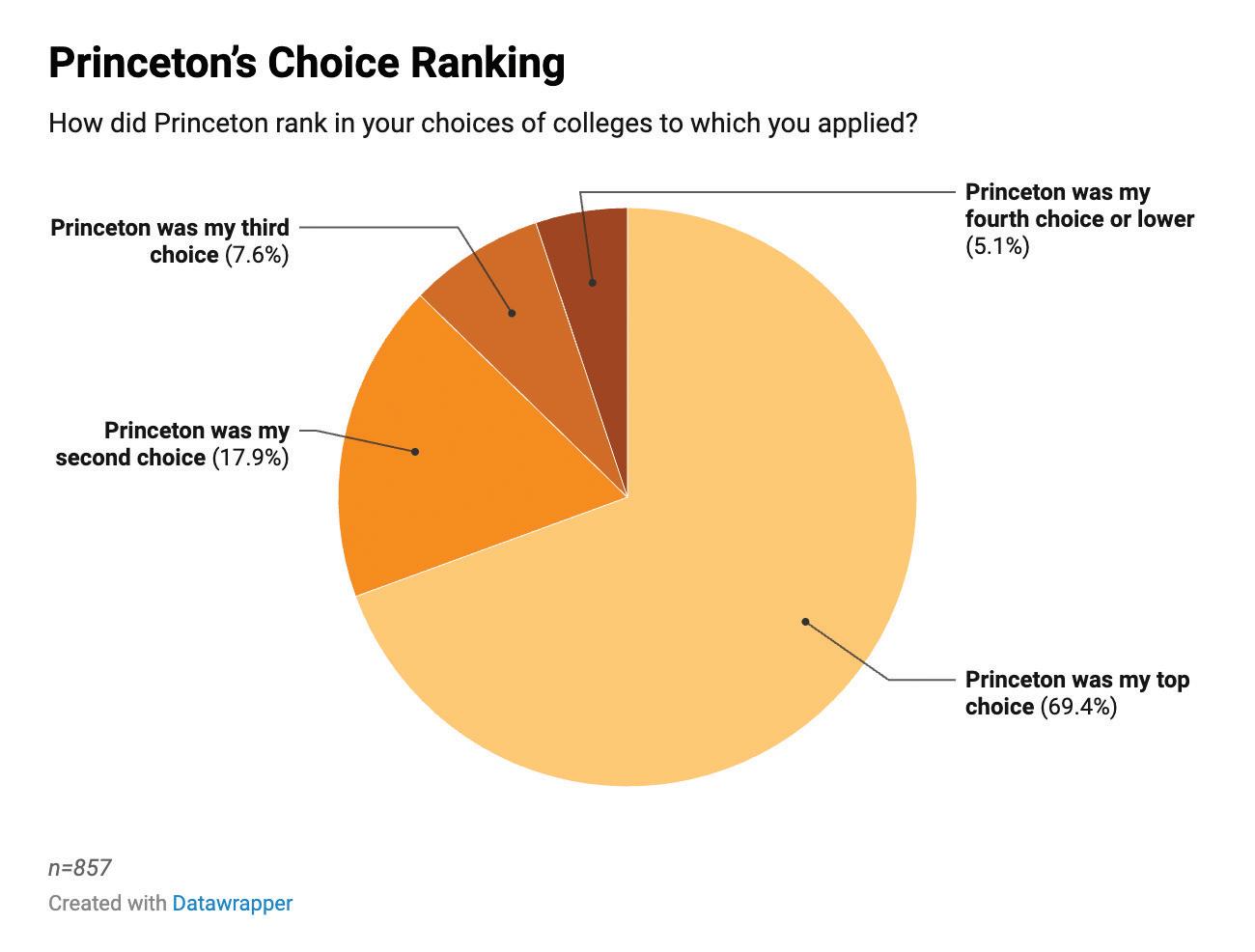
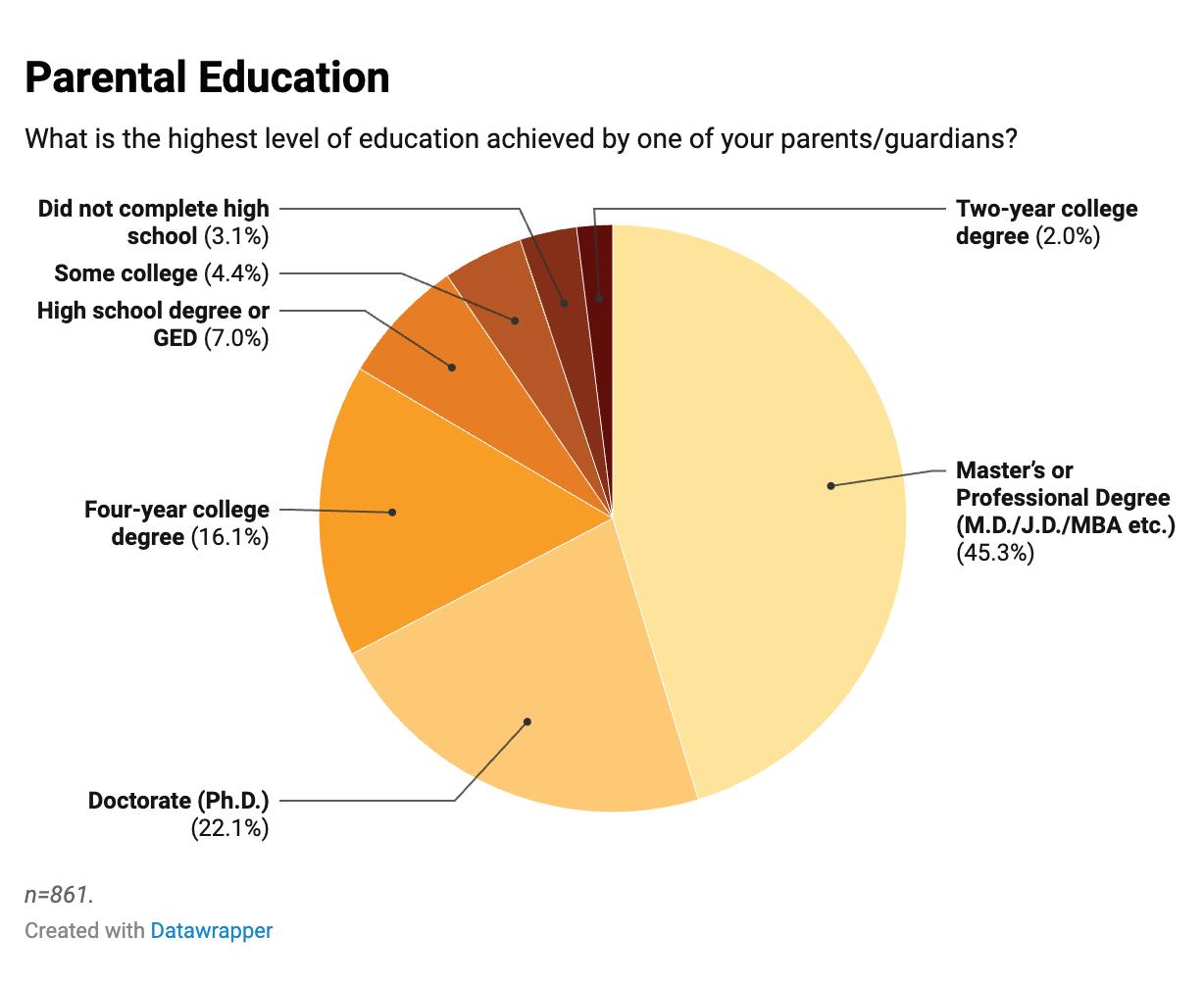
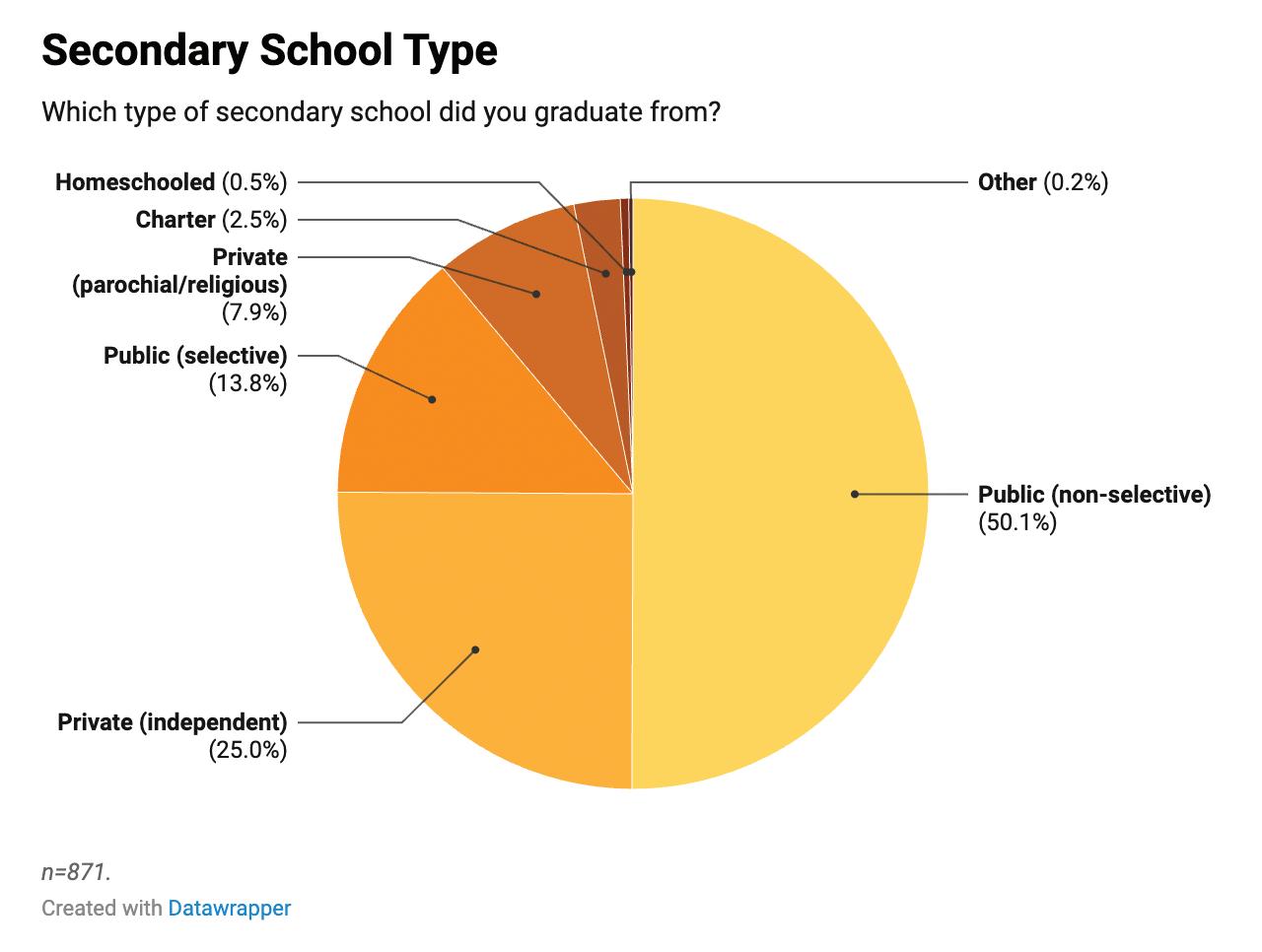

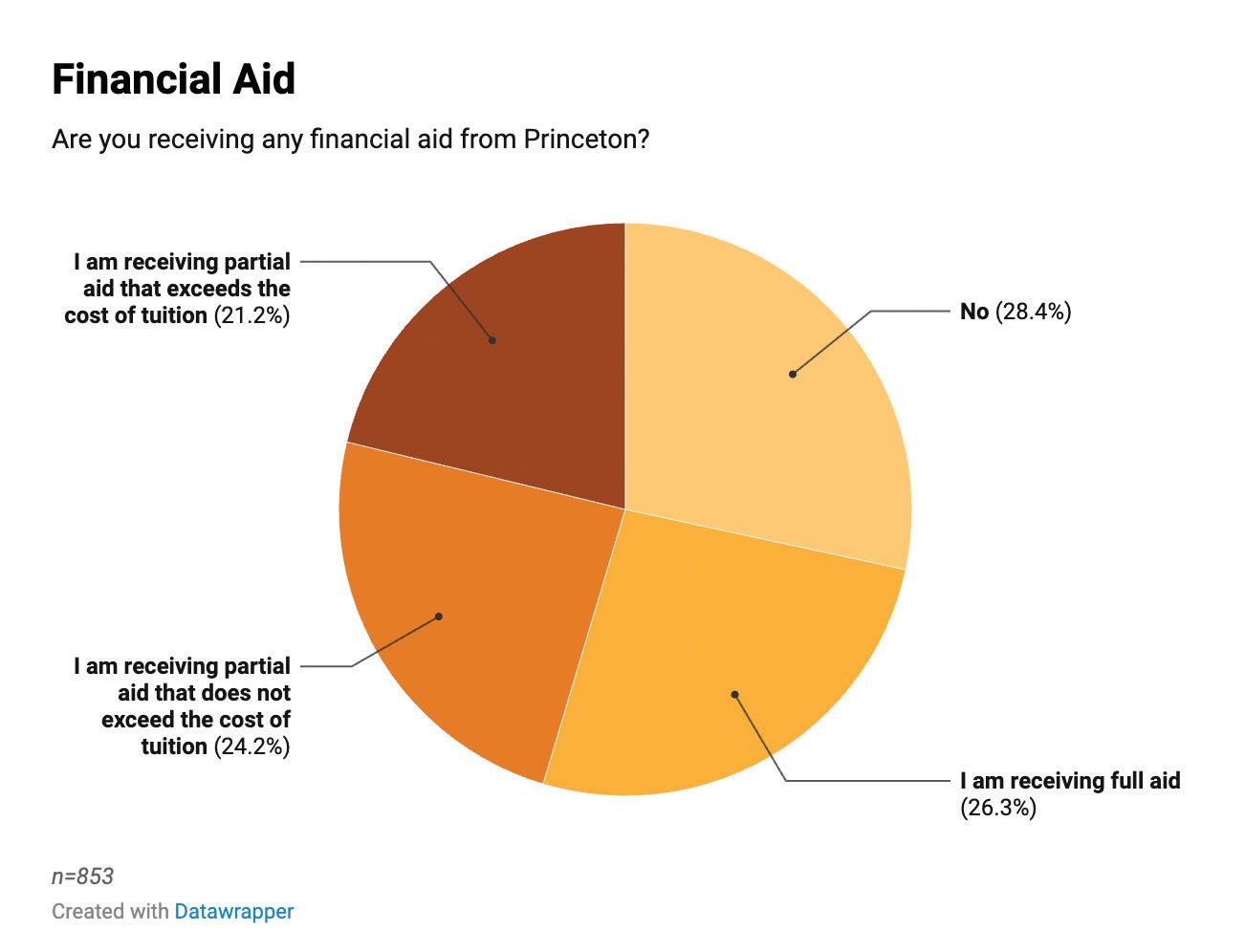



www.
Christofer Robles Editorial Board Chair
The Trump administration and its lackeys have used the recent assassination of far-right activist Charlie Kirk to hide its own suppression of free speech.
But conservatives, nationally and at Princeton, are crying wolf. The death of Kirk is not symptomatic of some leftist guerrilla psyop. American political violence has long been a tool of the right, and the attempt to pin Kirk’s assassination on the left is symptomatic of the real free speech problem at Princeton: dishonesty. Members of the campus right have misrepresented the status of free speech on campus, drawing on a few isolated incidents to paint themselves as the real victims in the debate.
In the last week, op-eds published in this paper have reopened the circular and mutually accusatory investigation into whose speech is freer: liberals’ or conservatives’?
Siyeon Lee ’27 and Charlie Yale ’28, both Opinion editors at The Daily Princetonian, criticize alumni groups like Princetonians for Free Speech
(PFS) for “publishing a letter to all first years in a journal that only appeals to a select few on this campus.” But I reject the implication that conservatives are not interested in engaging with the greater Princeton community through mainstream channels. Having once served as the Community Opinion editor for the ‘Prince’, I personally edited and helped publish countless pieces written by members of PFS and The Princeton Tory.
In fact, it is the hypervisibility of conservative voices in this paper, national media outlets, and several free speech groups — like PFS and the Princeton Open Campus Coalition — that support the conclusion that there is no de jure curtailing of conservative speech at Princeton. As Lee and Yale point out, “the people on our campus currently facing the most tangible threats to free speech are not disaffected conservatives,” but international and undocumented students facing visa revocations for their speech.
Zach Gardner ’26, publisher of The Tory, and Maximillian Meyer ’27 assert in separate opinions that campus culture has cultivated an antagonistic, hostile approach to conservatives. But neither Gardner
nor Meyer produces anything more substantive than one-off anecdotes of opposition — almost all of which are examples of protected speech — to diagnose the University with its supposed cultural free expression problem. Gardner laments Fizz posts that express, albeit condescendingly, different opinions from his own. Meyer rebukes students for not “[recognizing] ideological opponents as worthy of dialogue,” but cites just one example of students being understandably reluctant to engage in a controversial discussion with a campus figure prominent in conservative media.
Most Princeton students are not hateful towards conservatives. Many of them remain apathetic about major political issues, and I find that those who do care are generally able to conduct themselves civilly. Gardner’s and Meyer’s disapproval of anonymous commenters is in no way representative of poisonous political discourse. Unable to substantiate the myth of their oppression, conservatives have resorted to making Charlie Kirk their martyr.
Kirk will be remembered by many as a racist, sexist, homophobe, Islamophobe, and xenophobe who thrived on
sensationalism. He disgracefully denied the separation of church and state, and was a champion of white supremacist replacement theory.
And there is no denial that Kirk died for his speech. Tyler Robinson, Kirk’s alleged murderer, confessed his motivations in a text message, writing that “there is too much evil and [Kirk] spreads too much hate,” according to the court documents.
But Kirk’s death is an extremely rare example of leftist political violence. A 2024 National Institute of Justice study — once promoted by the Department of Justice until it was removed in the days following Kirk’s assassination — concluded, “[T]he number of far-right attacks continues to outpace all other types of terrorism and domestic violent extremism.”
So, when Meyer asks, “Where do we go when to be a conservative speaker on a college campus is to put oneself at risk of a bullet?” he poses a question that grossly misrepresents the current political moment. Kirk’s position as an eminent and controversial political figure who traveled nationally from campus to campus antagonizing thousands of students in no way resem -
bles that of the average rightwing student — especially not on a campus as protective of speech as our own — nor that of the average right-wing American.
It is conservative Americans who police social media, shaming users who do not misremember Kirk’s legacy. It is members of the Trump Administration who have openly called for the suppression and criminalization of expression they find disagreeable. And it is campus conservatives’ revisionism that serves as the very blueprint for this censorship of liberal voices.
Gardner hopes that Kirk’s death will inspire us to see each other as “brothers and sisters.” Meyer calls upon us to “honor the ideals for which Charlie Kirk stood … by speaking, building, advocating, and leading.” I agree that Princetonians should respect one another. But propping up Kirk as the paradigmatic example is dishonest whitewashing of his divisive stances, and reflective of a fear of oppression that simply does not exist.
Christofer Robles is the Editorial Board Chair for the 149th Board.
Rahin, Sarah Lee, Christian Slavin & Ella Gantman Guest Contributors
This year has been unlike any other for SPIA’s Scholars in the Nation’s Service (SINSI) program. For almost 20 years, SINSI has guided Princeton students toward careers in public service through fellowships and internships with government agencies. But as academia and the federal workforce have adapted to rapid policy changes, SINSI has had to adapt too.
The six of us have recently served or are serving in government positions as these changes take place; several of us have had the unique experience of working in offices that were eliminated or completely repurposed during our time there.
It has been a gut-wrenching experience to see our coworkers fired and our former offices dismantled. But we have come away convinced — often by those very same coworkers — that public service has never been more important for our country or for our generation.
Even in this wildly politicized moment, we have all worked on policies that overcame partisan wrangling in
order to serve Americans. We have all seen courageous coworkers speak up in defense of worthwhile programs, with varying degrees of success. And most importantly, we have seen all the good that thoughtful public policy can accomplish — including that which usually goes unnoticed.
We hope that our experiences will shed some light on the good work still being done and the opportunities that still exist in government service.
We have chosen to share some of our experiences because we regularly hear our generation’s disillusionment with public service. Their hesitation to enter public service is understandable — mass firings of civil servants and the elimination of entire agencies are unlikely to inspire people to seek careers in government. But if anything, these developments underscore how important it is that those who remain are conscientious and principled public servants, willing to resist inappropriate political pressure and fulfill the obligations of their office.
One of us had an offer with the U.S. Treasury Department that was canceled due to the hiring freeze imposed at the beginning of the Trump administration. She instead
worked with the State of New Jersey in Governor Phil Murphy’s Office of Policy. The work involved analyzing how new policy measures, like tariffs and Medicaid cuts from the One Big Beautiful Act, would impact the state. Even when federal opportunities are limited, states and cities offer equally impactful ways to serve. States can often move faster and be bolder than the federal government in serving their citizens’ needs, especially in times of prolonged gridlock or instability at the federal level.
Working in humanitarian assistance at the Bureau of Population, Refugees, and Migration (PRM) in the Department of State, one of us was deeply concerned about what the transition between administrations would mean to the office and staff. PRM’s staff, a combination of civil and foreign service, are dedicated public servants. Despite upheaval in mission and grant funding, the staff resiliently continued in their service, advocating fiercely for the continuation of its essential work. Although the majority of PRM’s funding and much of its staff were cut, their records will show how many lives had been saved and could be saved.
These experiences teach SINSI scholars how crucial
systems, like the system of humanitarian assistance, work on a daily basis, and how those systems can be unmade. When the tides turn back to the importance of humanitarian work, we will be ready to serve.
Government work has a tendency to hide the meaningful under the mundane. One of us worked at an embassy during and after the presidential transition, which took up the vast majority of everyone’s time, resources, and bandwidth. But in any government office, there is always essential work — work that is only noticed if it doesn’t get done. Moments stood out that were far from newsworthy, but no less meaningful for it: updating an embassy website so that people did not show up for nonexistent visa appointments; trying to to maintain contacts with civil society even if the embassy could no longer offer grant money; or something as personal as ensuring that released political prisoners had a private space to reunite with their families. Those small tasks all meant a great deal to someone. The chance to do that kind of work will not go away anytime soon.
It is sometimes difficult to see the value of service in times of instability, disinvestment in public services,
eroding public trust in government, and an uncertain job market. But even in times of massive turmoil, public service is still able to drive initiatives that aren’t sufficiently politicized to make newspaper headlines. Public service can exert genuine influence on policy, earn back trust in our institutions, and to model integrity transparency in government. We are motivated by two shared principles: the belief that this moment demands more engagement and that it would be a mistake to cede the work of government to those who think it does not matter.
Joe Shipley, Ryan Sung, Rooya Rahin, Sarah Lee, Christian Slavin, and Ella Gantman are SINSI Scholars. Sarah Lee worked at the U.S. Department of Housing and Urban Development, in the White House Office of Management and Budget, and later as a Graduate Fellow in the New Jersey Governor’s Office of Policy. Rooya Rahin served as a Graduate Fellow at the State Department’s Bureau of Population, Refugees, and Migration and now serves as an Economic Fellow at the U.S. Embassy in Ottawa. Joe Shipley served as a Graduate Fellow at the State Department’s Belarus Affairs Unit and the U.S. Embassy in Lithuania.
vol. cxlviii
editor-in-chief
Miriam Waldvogel ’26
business manager Jessica Funk ’26
149TH MANAGING BOARD
upper management
Eleanor Clemans-Cope ’26
Isabella Dail ’26
director of outreach
Oliva Sanchez ’26
Accessibility
Bridget O’Neill ’26
Bryan Zhang ’26
creative director Malia Gaviola ’26
strategic initiative directors
Suthi Navaratnam-Tomayko ’26
editors at large Research
Andrew Bosworth ’26
Education Hayk Yengibaryan ’26
Sections listed in alphabetical order.
head archives editor
Lianne Chapin ’26
associate archives editor
Jillian Ascher ’28
head audience editors
Paige Walworth ’26
Justus Wilhoit ’26 (Reels)
associate audience editors
Catherine Ross ’27
editors
associate reels
Natalia Diaz ’27
Loreta Quarmine ’27
head cartoon editor
Eliana Du ’28
head copy editors
Lindsay Pagaduan ’26
James Thompson ’27
associate head copy editors
Coco Xu ’27
Song Ting Tang ’27
head data editors
Vincent Etherton ’26
Alexa Wingate ’27
head features editors
Raphaela Gold ’26
Coco Gong ’27
associate features editors
Mira Eashwaran ’26
Valentina Moreno ’26
head humor editor
Sophia Varughese ’26
associate humor editors
Tarun Iyengar ’28
Francesca Volkema ’28
head news editors
Victoria Davies ’27
Hayk Yengibaryan ’26
associate news editors
Thomas Catalan0 ’27
Devon Rudolph ’28
Cynthia Torres ’27
head newsletter editor
Caleb Bello ’27
Chair
associate newsletter editor
Corbin Mortimer ’27
head opinion editor Frances Brogan ’27
community opinion editor
Jerry Zhu ’27
associate opinion editors Preston Ferraiuolo ’26
Siyeon Lee ’27
head photo editors Calvin Grover ’27
Jean Shin ’26
head podcast editor Maya Mukherjee ’27
associate podcast editors Twyla Colburn ’27
Sheryl Xue ’28
head print design editors Kriste An ’28
Juan Fajardo ’28
head prospect editors
Mackenzie Hollingsworth ’26
Gavin McLoughlin ’28
associate prospect editors
Natalia Diaz ’27
Ysabella Olsen ’28
head puzzles editors
Wade Bednar ’26
Luke Schreiber ’28
associate puzzle editors Jasin Cekinmez ’27
Lindsay McBride ’27
Peter Stover ’28
head sports editors
Alex Beverton-Smith ’27
Harrison Blank ’26
associate sports editors
Lily Pampolina ’27
Doug Schwarz ’28
head web design and development
editors Cole Ramer ’28
149TH EDITORIAL BOARD
Christofer Robles ’26
Members
Isaac Barsoum ’28
Frances Brogan ’27
Eleanor Clemans-Cope ’26
assistant business manager
Preston Ferraiuolo ’26
Anna Ferris ’26
Ava Johnson ’27
Raf Basas ’28
Bryan Zhang ’26
149TH BUSINESS BOARD
Alistair Wright ’27
directors
Andrew He ’26
Tejas Iyer ’26
William Li ’27
Stephanie Ma ’27
Jordan Manela ’26
James Swinehart ’27
Adelle Xiao ’27
Chloe Zhu ’27
business manager emeritus Aidan Phillips ’25
149TH TECHNOLOGY BOARD
chief technology officer
Yacoub Kahkajian ’26
software engineers
Abu Ahmed ’28
Jaehee Ashley ’25
Brian Chen ’26
Nipuna Ginige ’26
Isaac Barsoum & Charlie Yale
Columnist & Assistant Opinion Editor
Princeton’s Carbon Mitigation Initiative (CMI), a climate research institute, and fossil fuel company BP ended their 25-year partnership earlier this month. Our organization, Sunrise Princeton, has been working to end this partnership for half a decade. We had serious concerns with the ways that BP used CMI’s research as an excuse to double down on fossil fuels. Therefore, we see BP’s departure as a win for the climate movement.
Yet BP’s exit is a symptom of a broader political backlash against climate progress. As much as we would like to say that Sunrise’s pressure was the sole factor that forced the end of the partnership, that BP viewed funding CMI as no longer beneficial to its public image seems like the largest motivating factor. Broadly, fossil fuel companies have abandoned their deceptive climate pledges, and the Trump administration is cracking down on climate research. As governments and corporations abandon climate action, Princeton must step up as a leader on the issue. To do this, we demand that the University adopt a campus Green New Deal to advance and protect the role of its climate research, cut its ties with the fossil fuel industry, and bolster environmental studies teaching and learning.
“enable the full use of fossil fuels across the energy transition and beyond.” We published a report last year that further detailed the harms this relationship caused.
BP’s departure indicates an abdication of environmental action across sectors. Amid global pullback from environmental pledges, the company appears to have reckoned that it does not need to worry about public opposition to inaction on climate change. In the run-up to its separation from the University, the company ditched its renewable energy pledges and doubled down on oil and gas projects, exemplifying a broader “green retreat” taking place across the private sector. The federal government under President Trump has also reversed course on climate action, tearing down renewable energy programs and dismantling climate research — including at Princeton. This backlash jeopardizes the nation’s efforts to tackle one of the most pressing global issues of our day. As the public and private sectors retreat, Princeton can step into the lead. To do so, it must implement a campus Green New Deal to combat the nationwide backlash while advancing a bold plan for climate leadership.
Here’s what that means.
versity more than $149 million between 2004 and 2022. Climate leaders must also disclose their ties to the fossil fuel industry. To that end, the University must issue an annual fossil fuel accountability disclosure detailing its remaining financial ties to the industry.
A Green New Deal for Princeton will also enhance environmental teaching and learning. Princeton must solicit donations to establish an environmental studies major — which all other Ivy League universities have — that will provide a home for its scholars and cultivate undergraduate and graduate research. We also see the eventual creation of an environmental studies distribution requirement as necessary; in the future, students won’t be able to afford not to think about climate. And Princeton must upscale its climate science communications apparatus, modeling itself after universities in the United Kingdom that have established institutions for multimedia science communication that often feature climate science.
Angelina Ji ’27
Allen Liu ’27
Rodrigo Porto ’27
Stephanie Sugandi ’27
ui/ux engineer
Joe Rupertus ’26
THIS PRINT ISSUE WAS DESIGNED BY
Juan Fajardo ’28
Kriste An ’28
Marley Hartnett-Cody ’28
Chengyu Fu ’28
Jose Santacruz ’28
Cassidy Critteron ’28 AND COPIED BY
Sarah Li ’28
BOARD OF TRUSTEES
president Thomas E. Weber ’89
vice president David Baumgarten ’06
secretary Chanakya A. Sethi ’07
treasurer Douglas Widmann ’90
assistant treasurer
Kavita Saini ’09
trustees Francesca Barber
Kathleen Crown Suzanne Dance ’96
Gabriel Debenedetti ’12
Stephen Fuzesi ’00
Zachary A. Goldfarb ’05
Michael Grabell ’03
Danielle Ivory ’05
Rick Klein ’98
James T. MacGregor ’66
Rohit Narayanan ’24
Marie-Rose Sheinerman ’23
Julianne Escobedo Shepherd Abigail Williams ’14
Tyler Woulfe ’07
trustees ex officio
Miriam Waldvogel ’26
Jessica Funk ’26
BP was the last major fossil fuel industry sponsor of Princeton research after the University dissociated from certain oil and gas companies in 2022. The company funded CMI to launder its image and protect its fossil fuel interests in the public eye. To BP, CMI was a “core programme” in its project to “authenticat[e]” its “commitment to low carbon,” according to congressional investigators. Over the years, BP has cited its funding of CMI to claim it was a climate leader, even as the company delayed climate action: a textbook case of greenwashing.
Further, CMI helped BP legitimize its core business of fossil fuel production. For example, one CMI leader gave recommendations to fossil fuel executives about developing carbon capture technologies — a strategy used by oil companies to delay the transition to renewables — that could
Princeton must find fossil-free sponsors for research labs that have had funding cut because of BP’s departure and Trump’s funding freezes, including the Geophysical Fluid Dynamics Laboratory, its flagship climate research lab. For CMI, we believe that labs associated with the institute can continue even without additional BP funding. Preserving Princeton’s climate research is insufficient on its own — it must also complete dissociation from the fossil fuel industry to protect researchers’ academic freedom and funding stability. And to advance Princeton’s climate research, the University must invest in environmental justice research through partnerships with frontline communities in New Jersey.
A Green New Deal for Princeton must include severing the University’s remaining ties to fossil fuels. This means completing divestment of the $700 million in privately held fossil fuel assets and cutting ties with companies under the PetroTiger umbrella, which have earned the Uni-
Finally, a Green New Deal for Princeton must include a legitimate plan to get to net zero greenhouse gas emissions. Currently, the Sustainability Action Plan relies on “innovative solutions” and “TBD” to complete its decarbonization goals. The University claims that “Princeton builds net zero 2046,” but it must follow through on those commitments and have a clear path to net zero.
With BP’s departure, Princeton has a chance to combat climate backlash with climate leadership. This year, we will demand that the University take that chance. But we need your support to make that happen. Today, Sept. 19, we are rallying at 1 p.m. in Firestone Plaza to call for a Green New Deal for Princeton. We invite you to join us.
Isaac Barsoum ’28 is a sophomore intending to major in Politics from Charlotte, N.C., and a co-coordinator of Sunrise Princeton. Barsoum is an Opinion columnist.
Charlie Yale is a sophomore from Omaha, Neb. and a co-coordinator of Sunrise Princeton. Yale is an assistant Opinion editor.
Students want to ask speakers questions. Let them.
Charlie Yale Assistant Opinion Editor
During his 2020 campaign for the Democratic nomination, a video of then-Harvard freshman Pete Buttigieg made its way around the internet. In the video, Buttigieg asks Larry Summers — Secretary of the Treasury under Bill Clinton — a question at a talk Summers gave on campus about how American economic policy could hail “a tangible qualitative human improvement worldwide.”
Most viewers were taken aback by the young Buttigieg’s eloquence. I was taken aback because Buttigieg was permitted to stand up and ask a question.
At many of Princeton’s most well-attended political events, it is not attendees that get to decide when they want to ask a question. For some speakers, questioning periods aren’t even built into their events.
It is a real privilege as a student in a changing world to be able to hear speakers from every walk of political life talk about what they think is important. But, fundamentally, these events do not advance discourse on pressing issues if attendees are not given
the opportunity to question the speakers. Students deserve the opportunity to ask questions of political leaders who speak on campus, and not just the questions that are pre-selected by a leader’s staff.
Take, for example, Supreme Court Justice Ketanji Brown Jackson’s visit to a packed Richardson Auditorium earlier this month. After spending about half an hour merely reading from the prologue of her new book, Justice Jackson addressed an unprecedented expansion of executive power in vague terms, and then didn’t take any questions from students at the conclusion.
Of course, Supreme Court justices must be careful with their speech, especially if it concerns pending cases in front of the court. But as my colleague Shane McCauley ’28 astutely observed, many students used the event as a half-hearted attempt to engage with the morbid realities of a second Trump term. Being able to ask questions of the Justice — and directly confront the event’s weird avoidance of Trump’s assault on democracy — would have helped students work through the dissonance.
Think back to Harvard freshman Buttigieg. Summers answered his question on American
economic prosperity’s worldwide impact by detailing how President Clinton’s budget bill would create market incentives for vaccine production and delivery in developing countries. A question from an undergraduate yielded a substantive explanation of policy choices. Provided the same opportunities during big-ticket speaker events, I have no doubt that Princeton students could ask questions just as — if not more — enlightening.
Admittedly, not all questioning periods are made equal. When Supreme Court Justice Sonia Sotomayor ’76 came to campus to talk with University President Christopher Eisgruber ’83 in Spring 2025, she only answered student questions that were pre-selected, presumably by event administrators and members of her team.
In a more egregious example of guest speakers side-stepping the potential for challenge, when ex-Israeli Prime Minister Naftali Bennett came to campus, students submitted questions, but they were articulated by the event’s moderator. Questions from Jewish people who opposed Bennett were largely condensed into one line of questioning about anti- or nonZionist perspectives, which Bennett used to simplistically question why a Jewish person would not wholeheartedly support Israel.
If confronted by an actual student, rather than a caricature of one, perhaps his reaction would have been different.
Both of these cases relieve the speakers of one of the essential responsibilities of public life: engaging in difficult conversations. If the speakers are selecting the questions, they certainly won’t select questions that make them look bad.
These opportunities to deeply engage with the nation’s political bigwigs are formative to our student body, many of whom will go on to become major political and intellectual leaders. While Pete Buttigieg probably doesn’t remember what he asked Sec. Summers in the fall of 2000, the act of engaging with a leader on an issue important to him (practiced again and again) likely seeded his interest in a political career.
When a department or group organizing an event doesn’t allow students to ask uncomfortable questions of some of the world’s most prominent public servants because of possible repercussions, students lose the ability to engage with leaders — key training for engagement beyond the Orange Bubble. It can be difficult to convince a speaker to accept questions from a crowd of students. It
makes sense why a public figure wouldn’t want to talk about politically dangerous issues. But when questions aren’t allowed, events become devoid of meaning. That doesn’t necessarily mean that they shouldn’t happen — there is something about being in the room with the person — but attendees should be clear-eyed about the fact that the narrative is out of their hands.
Questions about a past record, while sometimes difficult to answer, are essential for holding figures in power accountable. Choosing a public-facing life means facing public scrutiny — especially for those in political power, whose decisions tangibly affect the lives of others. When guest speakers and the programs that invite them micro-manage their events to be as comfortable for them as possible, visits to campus that should be pithy opportunities to engage with complex ideas are rendered self-aggrandizing promotion. If speakers are going to come to our campus and speak to students about tough issues, they should expect tough questions.
Charlie Yale is a sophomore assistant Opinion editor from Omaha, Neb. He can be reached at cyale[at]princeton.edu.
‘We reject the accusation that PFS “only stands for one slice” of free speech.’
umn his experience as a first-generation first-year student from a blue-collar, Italian-American family who was ostracized at Princeton because of his conservative views. It seemed an appropriate starting point for readers of the Tory.
The Tory’s conservative readership is not a reason for PFS to decide against publishing in its pages. On the contrary, we believe that appearing in student publications across the full spectrum of political viewpoints on campus is essential to our mission.
Lee and Yale also charge that we did not sufficiently champion the free expression rights of international students. We welcome posting articles about the plight of Princeton’s international students from The Daily Princetonian, as we did with Jorge Reyes’ column on protesting for undocumented students, as we did with PAW’s recent powerful article about the impact of government policies on international graduate students. While the second Trump administration has made the situation much more precarious for international students, we have never differentiated between the rights of domestic versus international students in our advocacy of free speech protections. We would love to have international students, or any students for that matter, whose free speech and academic freedom rights have been infringed to contact us and share their stories.
At PFS we try to exemplify and uphold our core principles of nonpartisanship and viewpoint diversity, which is not always an easy task. We count a wide range among our ranks. Our board consists of both Democrats and Republicans and includes Lawrence Haas ’81, who was the Communications Director for Vice President Al Gore and for President Clinton’s Office of Management and Budget; Henry Kennedy Jr. ’70, a retired judge on the U.S. District Court for the District of Columbia appointed by President Clinton, and Edward Yingling ’70, former counsel to Democratic Senator J. William Fulbright, who was the chair of the Senate Foreign Relations Committee.
Our friends and advisors are national leaders in campus free speech advocacy, including the former ACLU executive director and renowned author Nadine Strossen, Jonathan Rauch, author of The Constitution of Knowledge: A Defense of Truth, John Tomasi of Heterodox Academy and Greg Lukianoff of FIRE (Foundation for Individual Rights and Expression).
All of these individuals recognize the threat to academic freedom and viewpoint diversity arising both from internal norms that discourage dissent among faculty and students, and from authoritarian external political pressures. PFS has helped bring all of these distinguished speakers to Princeton.
PFS has also issued a list of key internal reform recommendations to Princeton’s leadership, calling for a commitment to institutional neutrality, eliminating academic
departments’ use of mandatory DEI statements in faculty hiring, comprehensive student instruction on Princeton’s free speech principles and what they mean in practice, and support for faculty initiatives such as the Princeton Council on Academic Freedom. We also recognize that Princeton and other elite universities face acute dangers imposed by the Trump administration. In short, PFS is opposed to violations of free speech and academic freedom no matter the origin.
PFS has over 16,000 subscribers, the great majority of whom are Princeton alumni whose viewpoints no doubt vary widely. We post and repost articles relevant to our mission that respects and challenges this wide range. The fact that Lee and Yale take strong objection to some of our editorial choices while approving of others, including posts from the ‘Prince,’ means we must be doing something right.
One thing unites our readership: they tend to be very interested in student voices. This is why PFS has a student writing fellow program, which admits two or three applicants each semester and offers a stipend to write for PFS. And we take a special interest in posting relevant articles that appear in the ‘Prince,’ the Tory, or any other publication in which student writing appears. Whether domestic or international, we care deeply about the large numbers of students who report in many polls, including our own, that they regularly self-
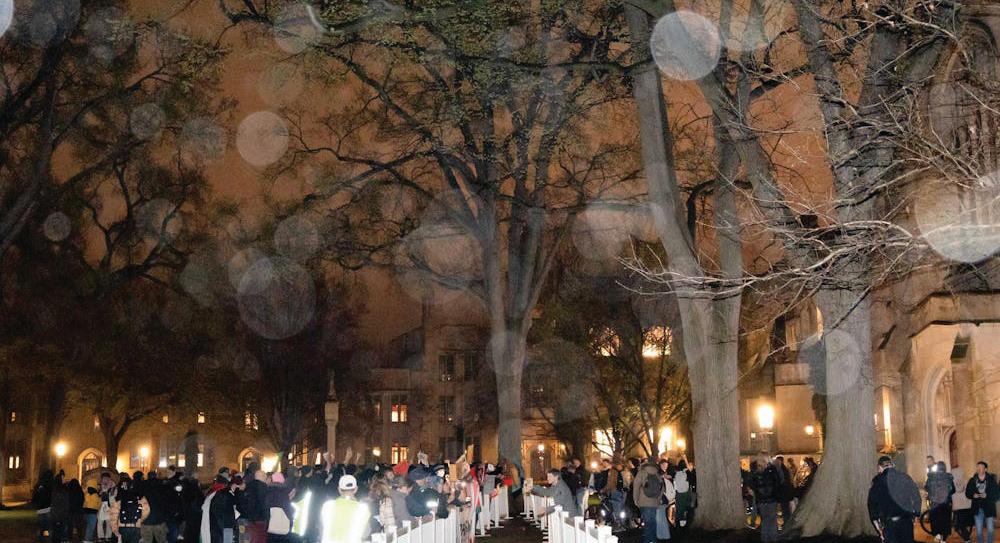
censor on important controversial subjects. Their reasons center around fear of offense, reputational damage, negative academic consequences, and doubts that their universities would defend them. They report a culture that rewards conformity and discourages dissent. No matter where you stand, a university culture that leads to self-censorship is, we believe, not conducive to a true education.
We are pleased that Lee and Yale recognize that free speech is “in a precarious place on campus” and that “things like viewpoint diversity are essential.” We reject the
accusation that PFS “only stands for one slice” of free speech. While Lee and Yale may take issue with how we accomplish our mission, we stand by our commitment to protect free thought and expression and to achieve a better culture for wide open discourse and free inquiry at Princeton.
Leslie Spencer ’79 is the Vice Chair of Princetonians for Free Speech. Angela Smith is the Executive Director of Princetonians for Free Speech. They may be reached at updates[at]princetonfs.org.
By Marley Hartnett-Cody | Contribiuting
Writer
Just a block off campus, nestled between the neighborhood homes on Spring Street, is a charming brick building home to illy Coffee at Earth’s End. Adorned with redaccented furniture, European-style patio seating, and — believe it or not — a cigar room, illy is a popular destination for students, staff, and community members alike to grab a tasteful pick-me-up. Admittedly an illy patron and enthusiast, I stopped in for two hours, and this is what I observed.
12:11 p.m.
On my slow Wednesday afternoon, I dart to illy in need of some entertainment and an even more exciting beverage. As my study buddy and I enter the cafe, the lone barista greets us warmly and takes our order. The brisk weather prompts an extremely serious internal debate: iced or hot coffee?
Ultimately I go for a hot vanilla cardamom latte, part of their September specials, while my partner goes for the iced blueberry latte, illy’s drink of the week. The barista recognizes us as students and adds the 15% student discount. Surveying the empty surroundings, we sit at a quaint table looking out onto their open patio. As an autumn breeze drifts past us, I realize I might need a sweater.
12:15 p.m.
A couple, who I assume are Princeton locals, enter the cafe, questioning the barista about the complex monthly drink specials. They ask about the limitless options, ultimately pondering the classic coffee options before continuing their walk through the neighborhood. As they leave, a single older man enters, quickly ordering himself a simple coffee before sitting at a nearby table.
12:18 p.m.
A rowdy group of three students enters with backpacks in tow. They are clearly on a coffee run between classes or maybe on a study break from the stacks of Firestone Library. Distracted by the countless eccentric options on the menu, one of the students barters with the others to decide for him. As they debate I hear one proclaim, “This is too much responsibility,” at the request of her counterpart.
12:35 p.m.
At this time our only cohabitor, besides the barista who’s rewriting the specials in beautiful calligraphy behind the bar, is joined by an older woman. Almost ignoring his companion, the man continues intently reading his phone before eventually getting up to order

her coffee. He knows her order, only turning back to ask, “small or large?”
1:04 p.m.
Still silently coexisting, I observe the adjacent couple considering what their relationship to each other might be. Suddenly the woman picks a dandelion off their table before lifting it into the air to fly off in the wind. A moment later they rise, only lightly whispering to each other as the soft melody of Fleetwood Mac’s “Songbird” resonates in the cafe. I reflect on the sweet lyrics, “‘Cause I feel that when I’m with you it’s alright, I know it’s right.”
1:09 p.m.
With a steady stream of students wandering in and out the glass front door, a student walks in carrying a bouquet of pink and yellow flowers. Her backpack tips me off that she has just come from the farmer’s market in Firestone Plaza. After she grabs her drink I watch her take a totally Instagram-able photo of her illy latte and beautiful bouquet.
1:30 p.m.
Two older men, maybe graduate students or professors enter, quickly ordering before grabbing a quaint corner table. The colleagues pointedly chat over an excel spreadsheet which I can only assume stores significant thesismaking data. One dons a tweed blazer that emanates an air of professionalism.
1:40 p.m.
A staff member enters the cigar room adjacent to the cafe seating area to replenish the ashtrays and prepare it for guests despite the lack of smokers. I quickly google the age requirement of cigars to assure my memory. I suppose this is the “At Earth’s End” aspect — At Earth’s End being a cigar parlor and larger social club within the Northeast Trans-Atlantic region — but I stop to snicker at the fact that a coffee shop almost tailored to a college clientele also hosts a cigar lounge.
1:46 p.m.
A cute older couple enters, briskly ordering two espressos before perching on the patio. They quickly drink their caffeine shots, sur-
veying the outdoor seating and making quiet conversation as if part of their daily routine. As I witness them, I can’t help but imagine a foreign city backdrop for the pair. And just like that they leave, spending ten minutes in illy at most.
2:10 p.m.
A postal worker delivers some mail to a cherry red postbox located within the restaurant just as it begins lightly drizzling outside. While the rain seems calm at first, it begins to quickly pick up and the temperature drops. My study partner and I begin to pack up as groups begin flooding in, escaping the downpour. As we leave, I thank the barista and suddenly remember my ordered croissant that never found me. What did find me instead was an appreciation for warm coffee and even warmer companionship at illy at Earth’s End.
Marley Hartnett-Cody is a member of the Class of 2028, a contributing writer for The Prospect, and a print designer at the ‘Prince.’ She can be reached at mh8519@princeton.edu.
By Lulu Pettit | Senior Prospect Writer
As the school year kicks into gear, there’s one thing students need to power them through long study days: coffee. There’s no need to leave campus to get your fix, since the student-run Coffee Club just dropped its fall menu, featuring five new drinks, during week three of classes. I headed to Campus Club and Addy Commons to try them.
False Dichotomy is a Vietnamese coffee-inspired cold brew with cardamom and cinnamon dusting. As a big fan of sweet and creamy coffee, this drink, which is only offered iced, immediately caught my attention. I’ve never tried Vietnamese coffee before, but I’ve been curious about its use of sweetened condensed milk for a long time. This drink uses cold brew for a stronger kick. Since I usually use skim or oat milk in my coffee, the creaminess of this drink was an amazing change from my usual choices.
I was excited to try this drink, a pumpkin spice chai, as a lover of both components. I ordered it iced with whole milk and was hit with strong spices on the very first sip. At first, the sweeter cinnamon takes center stage, but the aftertaste is ruled by the nutmeg and ginger. However, because pumpkin spice and Coffee Club’s chai latte have a similar spice profile, it tasted a bit like a very strong chai latte. The advertisement for the drink said it had a “sweet blend of warm spices and pumpkin,” but I wasn’t getting any notes of pumpkin, especially since pumpkin spice traditionally doesn’t have pumpkin in it — it’s meant to go with pumpkin. Regardless, the drink is sure to please chai lovers, even if the chai and the pumpkin spice blend together.
CHERRYPICKING
This drink, a mix of cherry coke
and espresso, had an uphill battle with me as I don’t enjoy espresso tonics. Although it didn’t turn me into an espresso tonic drinker, it was probably the best espresso tonic I’ve had. The cherry flavor is really strong, which results in a fruity taste. I can’t see myself ordering this one again, but I definitely recommend it for anyone who enjoys an espresso tonic.
STRAWMAN
I love a good cup of tea, especially rooibos, and the Strawman, a rooibos fog with a dash of cayenne pepper, was no exception. The cayenne and honey work perfectly together, balancing sweet and spicy notes. For anyone with the fall sniffles, I can’t recommend this tea enough. The cayenne comes through stronger than expected, but the earthy rooibos and the sweet honey hold their own.
SLIPPERY SLOPE
I love banana bread, and I love lattes, but I wasn’t sure if I would love them together in one drink. However, I was entirely mistaken: this was my favorite drink from the entire launch. It’s sweet and indulgent, with the cinnamon flavor hitting first and the banana coming after. I got it iced, but it would be just as delicious hot. For me, it was fall in a cup —cozy, nostalgic, and perfect for getting through a long day of studying. This drink is my new go-to latte. As a whole, the fall menu at Coffee Club is versatile, experimental, and fun. While you might not like every drink on the menu, they’re all worth a try, as they might totally surprise you. Students now have five new drinks to power them through the semester.
Lulu Pettit is a member of the Class of 2027 and a senior writer for The Prospect from the suburbs of Philadelphia. She can be reached at lp3153@princeton.edu or her Instagram @itslulupettit.
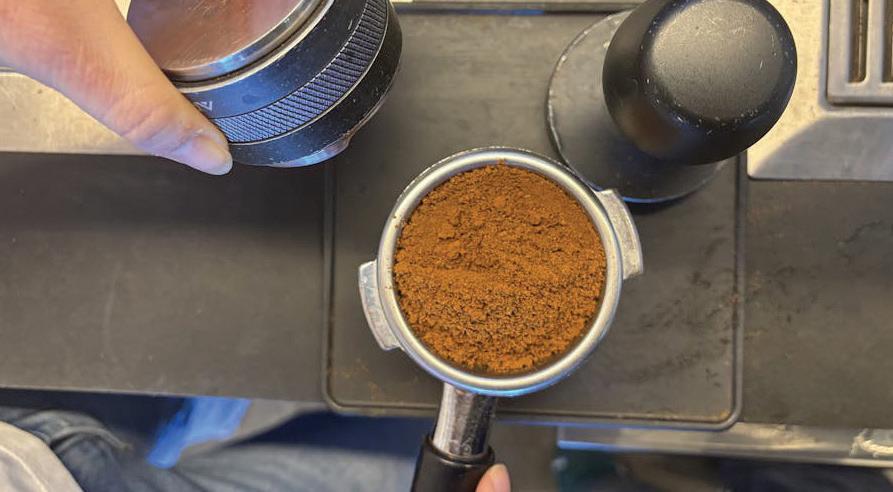



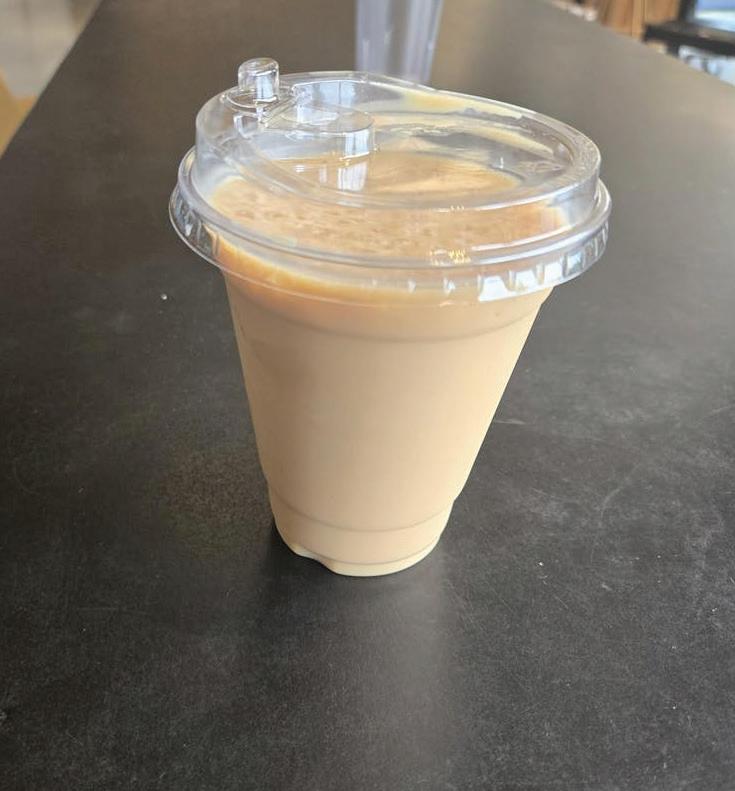
“Bring back fun; bring back whimsy,” Emilka Puchalski ’28 said. On Sept. 13, Puchalski and Yara Almoussa ’28 — in collaboration with TigerMag and WPRB — gathered matcha drinkers and Clairo listeners alike on the steps of Blair Arch for Princeton’s very own Performative Male Competition.
“Everyone’s doing it. We saw a banger one in San Francisco and a banger one at Yale. And we could do better because we’re the number one school in the world,” Puchalski said.
Combating the misconception that every student lives in the dungeon of Firestone’s C floor, Almoussa said she wanted to spread the message that “having fun is not something that is separate from Princeton.”
To understand this event, however, one must first understand the performative male: matcha addict, baggy pants three sizes too big, “ultra-feminist,” tote bags, and loafers. These highly specific characteristics embody the “performative male,” a term born on social media to describe men who superficially curate their interests and appearance to appeal to women.
Although the competition’s title included the words “performative male,” the event’s flyer expressed the event was open to everyone.
With tampons flying and audience members piling onto Blair Courtyard’s grass, the competition created a unique background for visitors taking photoshoots.
While some audience members waited eagerly for the competition to start, most of the crowd trickled in as the competition gained traction. Creating a stage for Princeton’s undeniably mighty performative population, nearly 30 contestants joined the competition. The event’s
coveted prize was a $50 gift card to Small World Coffee, a popular student hangout and homebase of Princeton’s performative male population.
From a full-size painting easel to a chawan bowl and whisk for making matcha, the contestants presented strong visuals from the very beginning. Members of the crowd donned collectible Labubu figurines, hanging the plush toy from their jean loops. Two attention-grabbing signs rose above the others — one stating “No uterus, no opinion” and another saying “I hate period cramps.”
Four judges from TigerMag and WPRB roamed around, interacting with the contestants. They narrowed the contestants down to 10 people, who each gave an “elevator pitch” to the crowd. These contestants were then reduced to five based on the intensity of audience cheering. In the final round, the five finalists shared short speeches about women’s rights, ethical milk types, and beabadoobee songs, ending their campaign with a runway walk down the hallowed steps of Blair Arch.
After a tough-fought battle, Princeton’s top performative male was Benicio Vanichpong-Barbosa ’29. His attributes — which included his love of Laufey, his passion for thrifting, and his jeans’ ability to fit as many feminist paperbacks as possible — were ideal for the competition.
In an interview with The Daily Princetonian, he stated he was unaware of the competition and had stumbled upon it. Vanichpong-Barbosa credits his performative style to his sister. When asked if he believes he caters to the female gaze, he shared that “I don’t think that’s up to me, you know? I think that’s up to all the women out there.”
Princeton’s premier Performative Male Competition
was a massive success, drawing newfound attention to the performative scene. Despite his short time on campus, Vanichpong-Barbosa’s victory has already brought him name recognition, leaving the Princeton community on notice to see where his performative male-ism takes him from here.
Upon receiving the honor of carrying the weight of Princeton’s performative population on his shoulders, Vanichpong-Barbosa shared a message to the rest of his performative community: “Keep being you. Don’t let the words of others discourage you. Be yourself.”
Zepeda is a contributing writer for The Prospect and a member of the Class of 2028. She can be reached at mz9063[at] princeton.edu
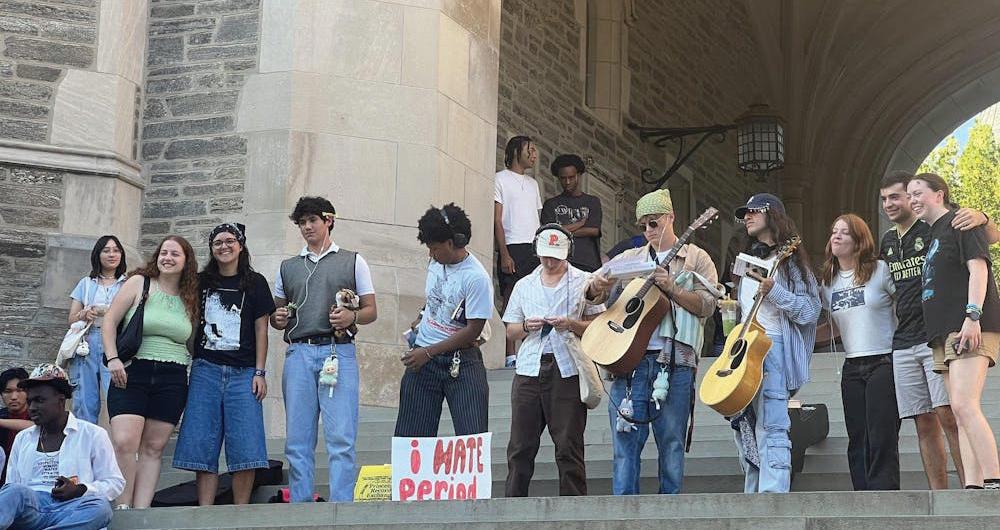
By Eric Mohorea, Contributing Prospect Writer
The Voice of the Century: A Tribute to Umm Kulthum
Sept. 27, 6:00 p.m. – 7:30 p.m.
Madison Hall, Rockefeller College Common Room
Witness members of the Princeton Opera Company (POCO) perform various opera songs in collaboration with student pianists, with POCO student leaders narrating the significance and meaning behind each piece. Entry is free.
PLOrk: Symposium on Audiovisual Artwork
Sept. 27, 7:30 p.m. – 9:00 p.m.
Lee Rehearsal Room, Lewis Arts Complex
In celebration of 20 years of the Princeton Laptop Orchestra, enjoy discussion and demonstrations from Berlin-based duo Transonic, game engine misuser Matthew Gantt, and Princeton alumnus Lola Constantino ’23, combining audio and visual elements in unique ways. Admission is free, and no tickets are required.
8
Sept. 26, 6:30 p.m. – 9:00 p.m.
Alexander Hall, Richardson Auditorium
Listen to the New York Arabic Orchestra (ft. Marwa Morgan) perform a variety of Egyptian singer and film actress Umm Kulthum’s significant works spanning multiple decades. Kulthum is commonly regarded as the most influential Arab singer in the world. Tickets are for sale.
How to Live at the End of the World
Orion Lopez-Ramirez ’26
Sept. 26, 7:30 p.m.; Sept. 27, 7:30 p.m.; Sept. 28, 2:00 p.m.
Donald G. Drapkin Studio, Lewis Arts Complex
Experience a darkly humorous performance in which a late-night talk show host must grapple with existential questions as the four horsemen of the apocalypse arrive. Created by Orion Lopez-Ramirez ’26, the performance discusses heavy philosophical and societal topics, including dimensions of power, engineered addictions, moral responsibility, and free will. Free tickets are required.
Jazz Concert: Jacques Schwarz-Bart & Grégory Privat Present “22”
Sept. 26, 8:00 p.m. – 9:30 p.m.
Paul Robeson Center for the Arts / Virtual
Witness the fruit of a 22-year-long musical partnership between jazz artists Jaques Schwarz-Bart and Grégory Privat, who share a birthday on December 22 exactly 22 years apart. Admittance is free and registration is required.
Festival Cultural Latino
Sept. 28, 1:00 p.m. - 5:00 p.m.
On the Green at Palmer Square
Come celebrate 10 years of the Festival Cultural Latino on the Green at Palmer Square. Presented by Palmer Square, Mi Pueblo Lindo, and the Princeton Public Library, the event will consist of music, food, dance, and a vibrant celebration of culture. The event will kick off at 1:00 p.m., with various performances throughout the afternoon.
Abel Selaocoe, Cello (Princeton University Concerts)
Sept. 30, 6:00 p.m. – 7:30 p.m.
Richardson Auditorium, Alexander Hall
Abel Selaocoe—South African cellist, composer, and singer— will make his Princeton University Concerts debut. He is known for his innovative compositions and performances. Join Selaocoe and other music lovers for an hour-long program. Tickets available for purchase.
Althea Ward Clark W’21 Reading by Karen Russell and Jericho Brown
Sept. 30, 6:00 p.m.
Labyrinth Books
Meet bestselling author and MacArthur Fellow Karen Russell (Swamplandia!, Vampires in the Lemon Grove) and Pulitzer Prize-winning poet Jericho Brown (The Tradition, The New Testament) as they put a start to the 2025-26 Althea Ward Clark W’21 Reading Series. No tickets are required.
Lecture/Workshop with Chief Ayanda Clarke: The Relationship Between Music and Dance
Sept. 29, 2:25 p.m. – 4:15 p.m.
Hearst Dance Theater, Lewis Arts Complex
Join a workshop with Grammy Award-winning musician, arts educator, and lecturer Chief Ayanda Clarke as part of “The American Experience and Dance Practices of the African Diaspora,” a Dance and African American Studies cross-listed course. Admission is free and open to the University community.
The Canon 65 Years Later: Nigerian Literature and the Postcolonial Perspective
Oct. 1, 6:00 p.m. – 7:30 p.m.
50 McCosh Hall
Listen to third-generation Nigerian authors Lola Shoneyin, Helon Habila, and Nnedi Okorafor commemorate Nigeria’s 65th year of independence and discuss the many nuances of post-colonial lit- erature. Free registration is required.
11
Journey
Oct. 1, 5:30 p.m.
Princeton University Chapel
Join sound healing practitioner Ruth Cunningham for composed and improvised music designed to facilitate meditation, contemplation, and prayer. One of multiple sessions offered throughout the year. No registration is required.
By Lily Pamplona & Alex BevertonSmith Associate & Head Sports Editors
Tiger fans packed Princeton Stadium Saturday afternoon for the eagerly awaited return of Princeton football.
Princeton Football (0–1 overall, 0–0 Ivy League) played a game of two polarizing halves, with much to say in the first and little to speak about in the second against the San Diego Toreros (2–2 overall, 0–0 Pioneer League).
After putting up five touchdowns in the first half to make it 35–21, a disappointing collapse after the break saw the Tigers concede 21 points in the fourth quarter to lose 42–35.
The team underwent significant personnel overhaul, and many were out to prove themselves as starters. Quarterbacks Kai Colón and Blaine Hipa were substituted every two drives. Both looked impressive in the first half, but neither could put Princeton over the edge in the second.
“We weren’t able to generate some first downs on offense that we needed to generate,” Head Coach Bob Surace told The Daily Princetonian postgame. “We had some negative plays and some plays that they disguised very well, so we gotta do a better job trying to predict what they’re doing.”
Despite the eventual score, fans of last season would not recognize the team that came out during the first half. Across all sides of the game — offense, defense, and special teams — the Tigers were lighting up the field.
In Princeton’s first three drives of the game, they managed a touchdown on each — scoring in four minutes, one minute, and 45 seconds respectively.
On offense, the team’s rushers ran up the scoreboard, as sophomore third string quarterback Asher Weiner walked in a 4th-and-1 play for a touchdown on a designed run to get the Tigers on the board early 7–0.
Following a big defensive effort, senior running back Dareion Murphy hauled in a huge reception before running in the ball at the one-yard line to make it 14–0. Princeton stuck to the gameplan once more, forcing a three-and-out from the Toreros before junior running back Ethan Clark
‘More
rushed for 55 yards and a touchdown on just the second play of Princeton’s third drive to make it 21–0 Tigers.
During the first quarter, Princeton’s defensive schemes were crucial in keeping the Toreros’ scoreless. Time and time again San Diego threw screen passes or slants which the Princeton playmakers were able to quickly shut down.
A forced fumble by senior linebacker and captain Marco Scarano proved crucial to the teams’ first quarter success. The Princeton defense would leave San Diego with just 68 yards in the first quarter compared to their 194.
Princeton’s troubles started after they went for it on 4th-and-1 on their own side of Powers Field, turning the ball over on downs and setting up the Toreros in good territory. San Diego converted on the field position with an impressive one-handed snag for a touchdown.
But Princeton remained relentless and maintained the deficit at 21 on the next drive, following senior quarterback Kai Colón’s first touchdown pass of his Princeton career to Clark.
“We felt and saw Ethan [Clarke] last year,” Surace told the ‘Prince.’ “I think something we talked about for this season is that we have a lot of confidence in his experience and depth.”
The teams ended the half trading touchdowns to make it 35–21 after Murphy ran the ball in for a Princeton score, but the Tigers on the defensive end gave up two big plays to cut their lead to 14.
Whilst the mood in the stadium was high for the Orange and Black, the missed plays on offense and defense came back to haunt the Tigers. Defensively, they gave up three high yardage plays on each of the Toreros’ touchdown plays in the first half and throughout the game three missed interceptions — turned dropped balls — could have reversed the growing momentum of the Toreros at any time.
The Tigers ended up with a monumental 338 yards and 35 points in the first half compared to 251 total yards for the Toreros and just 20 rushing yards. It was a first half offensive performance that exceeded most of their total offensive showings in games last season, but it was a performance that could not be replicated in the next half.
“We did a lot of good things in the
first half,” Scarano told the ‘Prince’ postgame. “We talked about it in the locker room, and we have to be consistent about things the whole game, we can’t go up and down.”
Coming out of the break with a 14 point lead, all eyes were on the Tigers to seal the deal. Unfortunately, a scoreless half combined with an offensive surge by the Toreros led to a complete collapse by Princeton.
On the first drive of the half, the Tigers forced San Diego to a three and out, giving up only four yards on the possession. The Toreros responded identically, forcing Princeton to punt after a short drive of under two minutes led by Hipa.
The teams exchanged the ball once more before the Toreros were able to break through the offensive stalemate in the transition between the third and fourth quarter. With a persistent 14 play drive, the Toreros drove down the field slowly but surely, converting four third down opportunities, and eventually finding the endzone with a four yard rush. The Tigers held a mere seven point lead with 10 minutes left to play.
Princeton began their next effort from their own 25 yard line with a forced rush by Colón, but the scrambling quarterback lost control of the ball, conceding the Toreros an opportunity to take over deep in Tiger territory. After a lengthy review to determine if Colón had hit the ground
before releasing the football, San Diego was granted possession at Princeton’s 32 yard line. A quick three play drive, sealed with a 24 yard rush by the Toreros equalized the game at 35 points a piece.
Eager to put themselves back on the board, the Tigers kept Colón at quarterback and began their possession with an ambitious pass attempt into San Diego’s half, but the ball fell incomplete. Colón attempted two more short passes, gaining eight yards, but on 4th and two, the team elected to punt the ball back to the Toreros.
On their third possession of the half, San Diego looked for another touchdown.
Starting at the San Diego 19 yard line, the Tigers forced the Toreros to a 3rd and nine, but a deep, 28 yard pass propelled San Diego forward to near midfield. In similar fashion, Princeton was able to contain the San Diego offense to a third and long on their next set of downs but gave up a nine yard run to push the Toreros deep into Orange and Black territory.
San Diego continued to push forward until the two minute warning, as the Tigers proved unable to stop the Torero rush attack. Less than a minute later, San Diego took their first lead of the game, with a third rushing touchdown in the fourth quarter by running back Adam Criter.
With only one timeout and one minute left on the clock, the Tigers needed a miracle to even the game. To start the
drive, Colón rushed for a first down and speeded into the second play, a short pass to Clark lurched for four yards. On the third play, Colón was sacked and Princeton was forced to take their final timeout with 24 seconds left.
Colón threw a long pass to senior wide receiver Jalen Geer who pushed the Tigers into San Diego territory with under 20 seconds to go. Colón spiked the ball before using second down to complete a short pass to Clark. On third and five and the last play of the game, Colón launched the ball into the highly contested end zone, targeting Geer, but the ball fell incomplete. Ultimately, Princeton fell to San Diego by a score of 42-35.
“I think we had a lot of great things from every position group,” Clark said to the ‘Prince.’ “We did a lot of good things, but there’s good and there’s bad. We made some adjustments and they made some adjustments and unfortunately that’s how the game was decided.”
Princeton will take on Lafayette in their first away game of the season next Saturday at 3:30 p.m. in Easton, Pennsylvania.
Lily Pamplona is an associate Sports editor for the ‘Prince.’
Alex Beverton-Smith is a head Sports editor for the ‘Prince.’
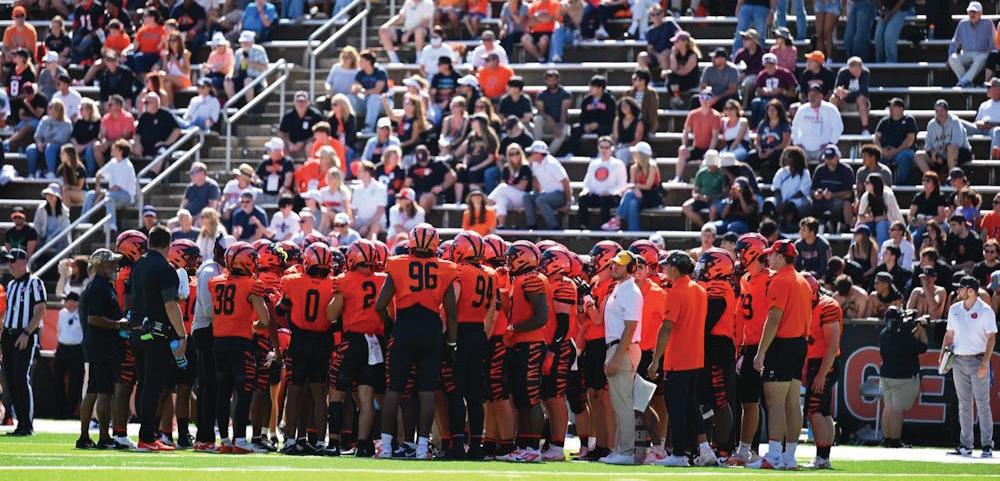
By Matthew Yi Assistant Sports Editor
Ahead of Princeton’s first football game of the season, the Princeton Varsity Club (PVC) hosted its annual complimentary Youth Sports Clinic for children ages 5 to 12 on Finney and Campbell Fields. With over 300 registered children and 200 Princeton Varsity athletes from 15 different teams, many local families and athletes bonded over games and activities.
This clinic was a part of PVC’s mission to connect Princeton athletes with the surrounding community through service and leadership. Each team set up a station to introduce the kids to their sport.
“My favorite part about it is being able to connect with what brought us here in the first place,” said senior defender Caroline Kane, a member of the women’s soccer team.
“A lot of student athletes here at Princeton still secretly have that little kid in them that they want to make proud on the field … and this is such a great chance to connect with that aspect again.”
For Kane, the clinic also demonstrated the broader values behind Princeton athletics. “It reminds us what it’s all worth,” she explained. “We’re here for more than just our sport. We’re here to make an impact on the world and the community around us…The PVC clinic is a good example of that, but it’s one of many opportunities Princeton gives us to serve.”
Other athletes echoed Kane’s sentiment.
Senior softball infielder and catcher, Julia Dumais, shares Kane’s feelings and mentions how the PVC clinic is one of many events that bring together both athletes and families.
“I think for Princeton, it brings all the athletes together as one unit to spread the joy
of what being an athlete and playing sports means,” Dumais said. “Personally, it’s also just a great way to give back. Growing up, I didn’t really have something like this, so seeing all these different sports come together, even ones kids might not have been exposed to before, is amazing.”
Like Dumais, senior lacrosse midfielder Jamison Moore emphasized the importance of giving back. Having participated in the clinic all four years, he reflected on how the event connects his own childhood memories of looking up to older athletes with his role at the PVC clinic.
“This is my fourth year being a part of the clinic, and it’s just really great to be able to give back to the community,” Moore said. “When I was younger, I always idolized the older kids in my town. Now, being in that role myself, I see a little bit of me in all the kids here. It’s an awesome opportunity to
pass it forward.”
Moore talked about giving back to the community by teaching kids how to catch, throw, and pick up the ball. He views the clinic as a whole as a great way to grow the game. After the clinic, many families were invited to attend Princeton football’s matchup against the University of San Diego in Powers Stadium. This event offered an opportunity to celebrate sports, mentorship, and the spirit of service that defines the PVC’s work.
Matthew Yi is an assistant Sports editor for the ‘Prince.’

FIELD HOCKEY
By Emilia Reay Staff Sports Writer
This Sunday, the No. 9 Princeton Tigers (1–0 Ivy League, 4–2 overall) toppled the University of Connecticut Huskies (1–0 Big Eastern Conference, 3–4 overall) 5–0 on Senior Day. Players Helena Große, Beth Yeager, Grace Anne McCooey, Ava Dempsey, and Ella Hampson were honored before the game, and three of the six seniors were involved in the power plays that put the Tigers on the scoreboard as well.
The University of Connecticut is not a easy opponent. Yet, as soon as the first buzzer sounded, Princeton locked in on defense and offense, something they struggled with this season.
“In practice, we have been talking about the forwards leading and how we can be efficient with our movements … I think we’ve sort of hammered that in practice and preseason, and today it really clicked and we were connecting like we never have before, ” senior defender Ella Hampson told The Daily Princetonian.
Senior midfielder Beth Yeager started the Tiger attack: Within five minutes, she rocketed the
ball past the cage from the entry pass from sophomore midfielder Clem Houlden, putting Princeton up 1–0.
The UConn team got a shot off around the eight-minute mark in the first quarter, but Princeton’s junior goalie Olivia Caponiti denied the attempt.
For the Tigers, the quarter didn’t end there. Sophomore defender Izzy Morgan found the back of the cage to close out the first 15 minutes of play. Morgan scored off of a pass to the weakside corner from sophomore midfielder Anna Faulstich, marking her first collegiate goal. Princeton ended the first period with two goals, double the single-quarter number in each of their last three matchups, and UConn went scoreless.
In the second quarter, the Tigers didn’t score, but they limited the Huskies to the same. This was the fourth-straight game the Tigers didn’t allow any scoring from their opponent in regulation.
With around eight minutes to go in the first half, UConn had a two-shot sequence, but the Princeton defense shut them down. With under a minute left in the half, the Huskies drew
four corners on Princeton, none of which led to successful shot attempts. Princeton went into halftime with a 2–0 lead.
“I think the energy was just phenomenal. I think we turned the sad emotions into energy and we really brought that to the game,” Hampson said to the ‘Prince.’
The third quarter was all Princeton. The Tigers had a corner with 9:01 to go, and senior midfielder Helena Große passed the ball to fellow senior Yeager, who then gave it to junior defender Ottilie Sykes. She scored, giving the Tigers a 3–0 cushion.
The fun didn’t stop there, though. Hampson was able to pop the ball to the back of the goal on a broken corner play to bring a third senior into the scoring action.
“They were sort of swarming around the keeper, there was nothing much going on because the keeper was lying on the floor,” Hampson told the ‘Prince.’ “You just take the opportunity where you can really.”
The Huskies couldn’t find a way to stop this powering Tiger offense — going into the fourth, the Tigers were up by four.
To end the game, Große brought it home for the Tigers, passing the ball to Yeager in a corner play, who pinged it back for a shot. With Große’s first career goal, the Tigers were on top 5–0.
“It was so exciting. Normally I am on defense so I don’t get that many goals,” Große told the ‘Prince.’ “I was so excited I actually started crying cause all the girls are so supportive and
cheering me on, which is the best part about being on this team. Honestly, there is just so much love and support.”
The Tigers will face No. 5 Harvard (0–0 Ivy League, 6–0 overall) on Friday, looking to stay undefeated in Ivy League play.
Emilia Reay is a staff Sports writer for the ‘Prince’ and the Spanish Language Pilot Program Director.
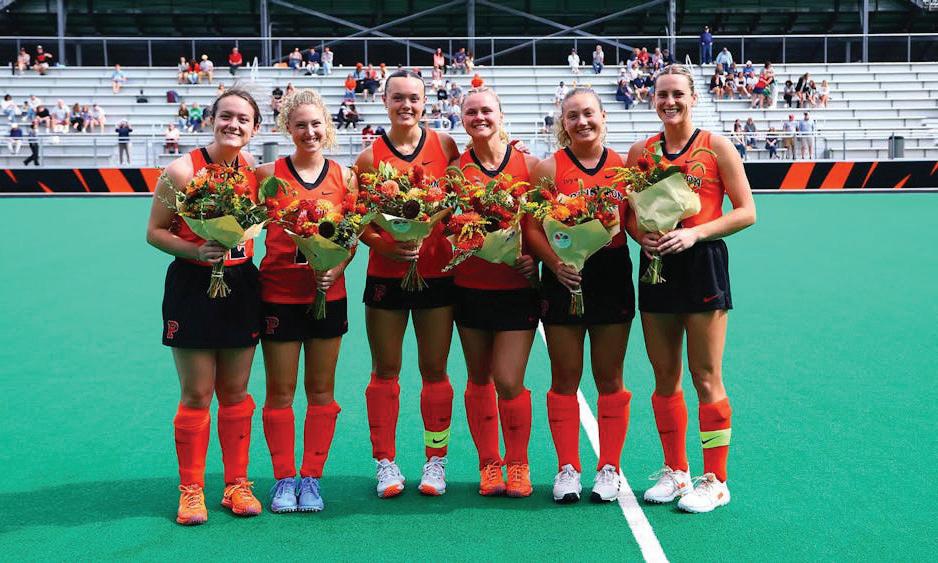
By Emilia Reay Staff Sports Writer
No. 9 Princeton (4–2 overall, 1–0 Ivy League) narrowly defeated the University of Pennsylvania (3–3, 0–1) on Friday with a late goal from an impressive assist from first-year midfielder Caitlin Thompson in the fourth quarter.
This matchup was the first game of Ivy League play, and Princeton, ranked in the top ten teams nationally, was expected to dominate. But keeping in line with their past two games, the Tigers struggled to connect on offense.
“[I] thought we needed to combine more in the midfield, like pass and run through and add numbers to the midfield,” Head Coach Carla Tagliente told The Daily Princetonian. “I think we just started off out of sync, meaning we couldn’t even string a couple passes together. I think frustration set in and we were forcing plays and we never really got into a system and opened them [UPenn] up.”
The Quakers started with the offensive attack in the first half, but they didn’t hold onto the ball for long. Princeton and Penn played scrappy, tapping the ball away from each other and running the whole field to grab possessions. The momentum shifts weren’t long-lasting, and neither team scored off of corners and circle entries.
The second quarter followed the same pattern. The Tigers played aggressively on both sides of the field, producing offensive runs and swarming Quaker players on defense. However, due to their inconsistent passing and communication, their game play wasn’t being
reflected on the scoreboard. Going into halftime, the Quakers had five shots on goal and Princeton only recorded two shots of their own.
While the Tigers started with the ball in the second half, the Quakers wound up in Tiger territory in less than a minute of play. This quarter mimicked the previous two. For Princeton, it seemed that players sent passes thinking that their teammates would go one way, but they would actually go another.
Late in the third, around the fiveminute mark, sophomore midfielder Molly Nye had a one-on-one opportunity against the Penn goalie, but her shot was blocked. The quarter ended scoreless.
The urgency built with only 15
minutes remaining, and sporadic runs weren’t winning the game for either team. The Tigers began the quarter with their seventh shot attempt, but the Penn defense deflected it. The next run decided the game for both parties.
“You could feel the stress from [Princeton] and [I told them] just relax and push through and try to break one,” Coach Tagliente told the ‘Prince.’ “The opportunities will present themselves and they did.”
The game-winning progression started with 13:16 on the clock, when sophomore midfielder Clem Houlden sent a pass into the circle to senior forward Talia Schenck. Schenck dribbled it away from the Penn defense until she sent a dag-
ger to the post where Thompson was positioned. Without looking, Thompson launched the ball between her legs to a wide open senior midfielder Beth Yeager on the opposite post.
Yeager had an open shot, the only goal of the game. The Tigers took it against the Quakers 1–0.
“I was thinking about having composure in front of the goal, earlier in the game I had missed an opportunity, so I was just trying to reflect on that and go forward and I’m glad that it paid off,” Thompson told the ‘Prince’ about her gamewinning play.
“We knew that we were generating opportunities and shots on goal, but that didn’t matter if
they weren’t going in,” Thompson added. “We felt the momentum going, and there was no way we could come away today without a win so we just knew what needed to be done and anyway we could do that, if we kept bringing the intensity and kept knocking on the door.”
The last three matchups of the Tigers have been won by a single goal.
“I think it was a great team goal, something we had been working on all week. It was great to connect like that and scoring is always fun,” Yeager said.
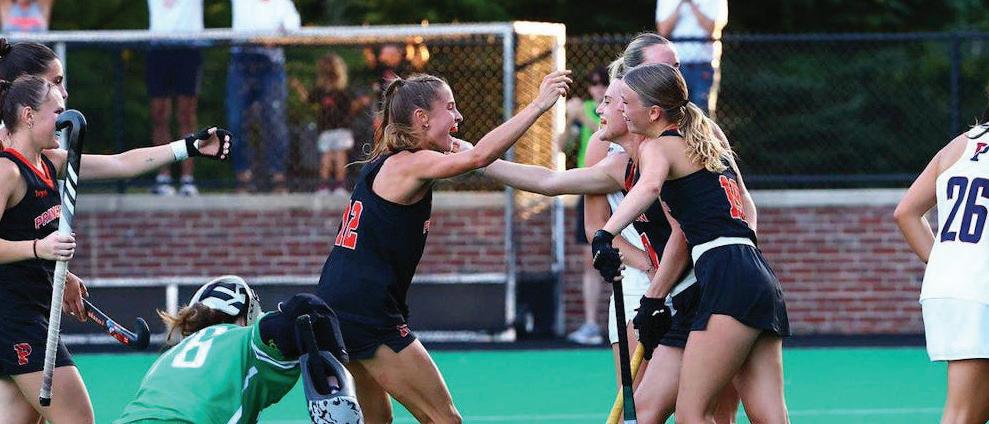
SPORTS By Harrison Blank Head Sports Editor
Each week, Sports and Data writers analyze recent athletic competitions to provide analysis and insight on the happenings of Princeton athletics and individual players across the 38 intercollegiate teams at Princeton. Whether they are record-breaking or day-to-day, statistics deliver information in concise ways and help inform fans who might have missed the action.
Princeton Athletics: Aug. 22–Sept. 17
Thirty-eighty games and matches were played across 10 sports and six U.S. states over the past 26 days. Of the 30 games where only one team could come
out on top, the Tigers won 60 percent of matches, a strong start to the academic year. Multiple day meets and tournaments are counted individually for each day of the competition. Competitions with more than one event or individual results — such as golf and cross country — are not included in our win percentage analysis.
This week, the Tigers won three-fifths of their games. They were unaffected by location, winning the same percentage of games away and home. The Tigers were slightly better at home overall, only losing four games in New Jersey compared to five on the road.
Clean 15
At least 1,500 fans packed into Bedford Field on Sunday to watch No. 11 Princeton field hockey face off with No. 2 University of North Carolina. The crowd, twice as large as any in the past two years for the Tigers, witnessed some of the highest level of collegiate field hockey as the Tigers fell 3–2.
Hat trick shtick
Throughout men’s water polo’s first eight games of the season, the Tigers have amassed 14 hat tricks throughout the full team, including four against No. 16 California Baptist University. The offense has driven the Tigers to an undefeated start, before they head out west this weekend.
Back to back off the track
Sophomore Meg Madison dominated the field in her first two cross country meets of the season, winning by 15 seconds and over nine seconds, respectively. The Ivy League honored her performance, naming her Ivy League Athlete of the Week in consecutive weeks.
156
Princeton football played in the first ever American intercollegiate football game in 1869, just 156 years ago. For reference, Ulysses S. Grant was the president in 1869, and the first professional game of baseball was played. The Tigers kick off their season on Saturday against the University of San Diego.
Fated eight
Last night, senior defender Jack Jasinski scored the game-winning goal in the Tigers 2–0 win over University of Massachusetts Amherst. In just four games, Jasinski has accounted for eight of 25 points for the Tigers offense, three goals and one assist. From individual and team offensive feats to running away with awards, the Tigers notched many successes in the field, pool, and course as they opened up many of their fall sport seasons. Check back in next week to learn about all things Princeton Athletics — By The Numbers.
Harrison Blank is a head Sports editor at the ‘Prince.’
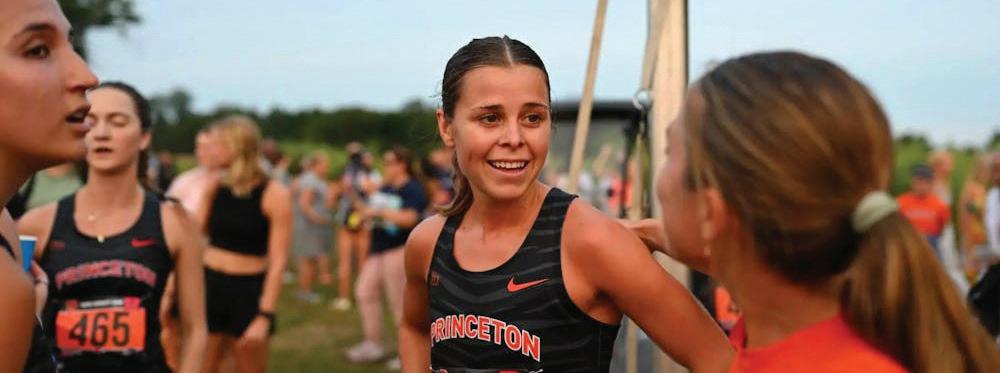
By Olivia Perry. contributing Archives Writer

Walking through downtown Princeton, Nassau Street — lined with shops like Hermès, Barbour, and the long-standing Hamilton Jewelers — can often feel out of reach for those on a budget. But compared to 1993, when business owners first tried to make the street more accessible to students, there have been noticeable changes that reveal how Nassau Street has evolved alongside campus life in its attempt to meet student needs.
On Sept. 23, 1993, The Daily Princetonian reported that Nassau Street’s line of jewelry shops and high-end boutiques long reinforced what merchants like Ray Wadsworth, owner of the Flower Market, called an “invisible fence” separating students from local businesses. However, in response to low profit margins, businesses in Princeton looked to appeal more directly to students.
“With recessions still hitting New Jersey and Route 1 shopping malls continuing to bite into Nassau Street’s revenues, it
has become increasingly difficult to turn a profit in this town … merchants appear to be rediscovering the budget-minded student market,” the piece noted.
At the time, shop owners saw students not just as part of the town’s atmosphere but as a potential lifeline for sustaining local business in the face of competition from Route 1 and online commerce. Many stores adapted by making themselves more student-friendly: adjusting hours, pricing, and offerings. The opening of institutions like the now-beloved Small World Coffee highlighted how new businesses directly catered to student demand and reshaped Princeton’s commercial culture.
Three decades later, Nassau Street still blends luxury with tradition. Boutique shops sit alongside student favorites like Hoagie Haven and Olives, while ice cream parlors and coffee houses continue to multiply. Small World Coffee has since grown into a cornerstone of Nassau life, always bustling with students.
Affordability, though, remains a sticking point. The “invisible fence” Wadsworth
described in 1993 may be less visible now, but many students still turn to Amazon or Instacart for essentials rather than shopping locally. Nassau Street remains a place to grab a meal, coffee, or a sweatshirt, but with a noticeable absence of a grocery store, it’s not always where students go for everyday needs.
While the names on storefronts have changed over the years, new initiatives are encouraging students to spend more time on Nassau. In 2022, The Daily Princetonian reported on the introduction of the Paw Points program, which gives students on a meal plan $150 per semester to use at select local businesses. Stephen Daniels ’24, the USG Community Dining Task Force Chair during the implementation of Paw Points, told the ‘Prince’ he hoped this program will improve access to activities like bonding with friends over food and meeting professors for coffee, as “eating meals together is a huge part of building relationships at Princeton.”
Since its launch, Paw Points have become a popular option for students looking to try new restaurants and cafes be-
yond campus dining halls. By partnering with local businesses, the program not only broadens students’ dining options, but also strengthens ties between the University and the wider community.
“The stores in town are very studentfriendly financially. Like many other students, Sunday morning coffee trips have become a routine of mine. I like to start the morning with a coffee from illy before spending the rest of the day studying in Firestone. Both illy and Rojo’s offer student discounts, and the baristas always give them with such enthusiasm. It feels like they’re really rooting for us as students,” Ella Miner ’28 said.
For students like Miner, the sight of Paw Point stickers in shop windows and cheerfully applied discounts suggests that Nassau Street isn’t just a backdrop to college life, but an extension of it — blurring the line between Nassau Hall and Nassau Street in ways that feel a little more hopeful than they did
ago.
Olivia Perry is a contributing Archives writer.